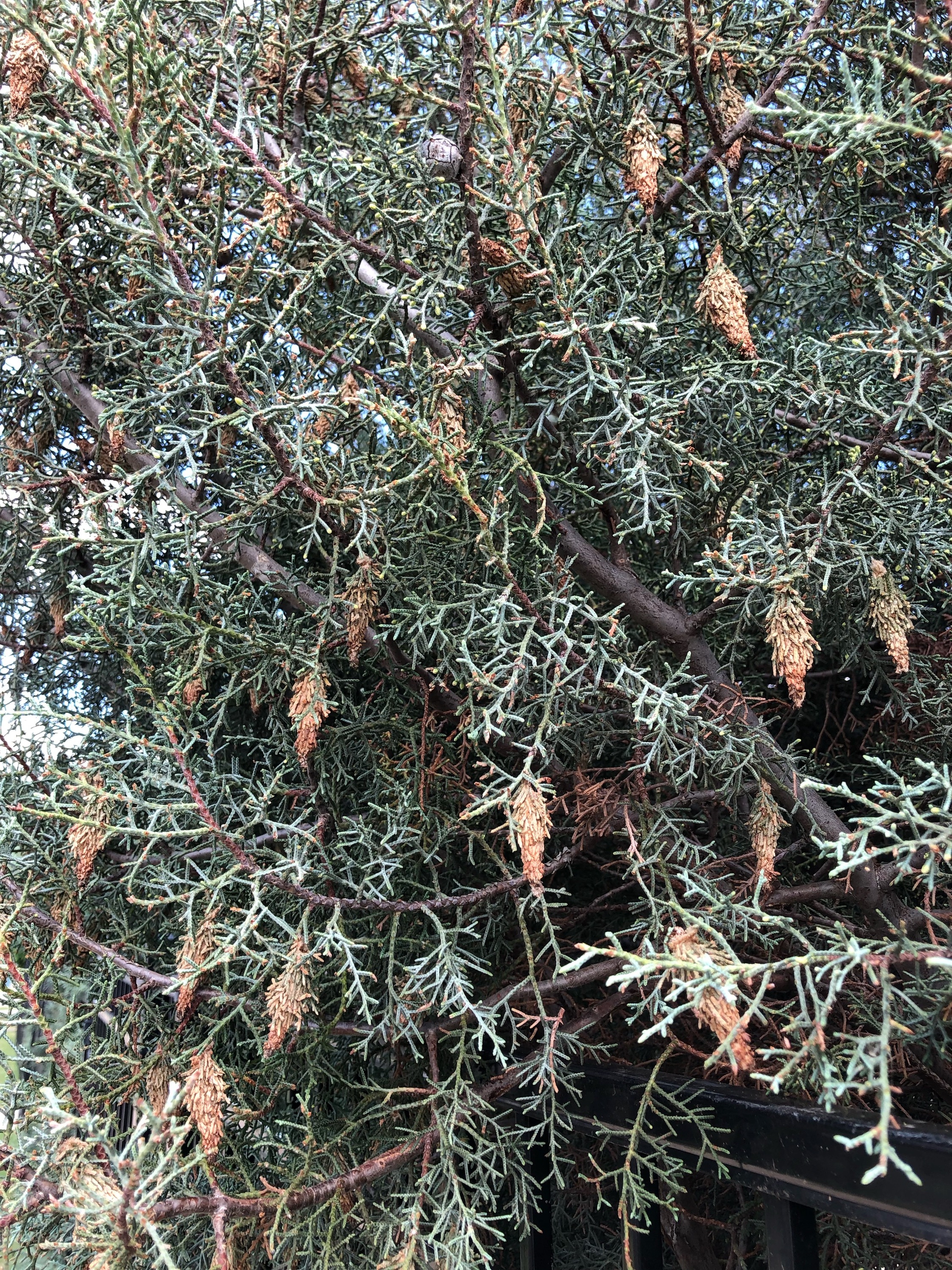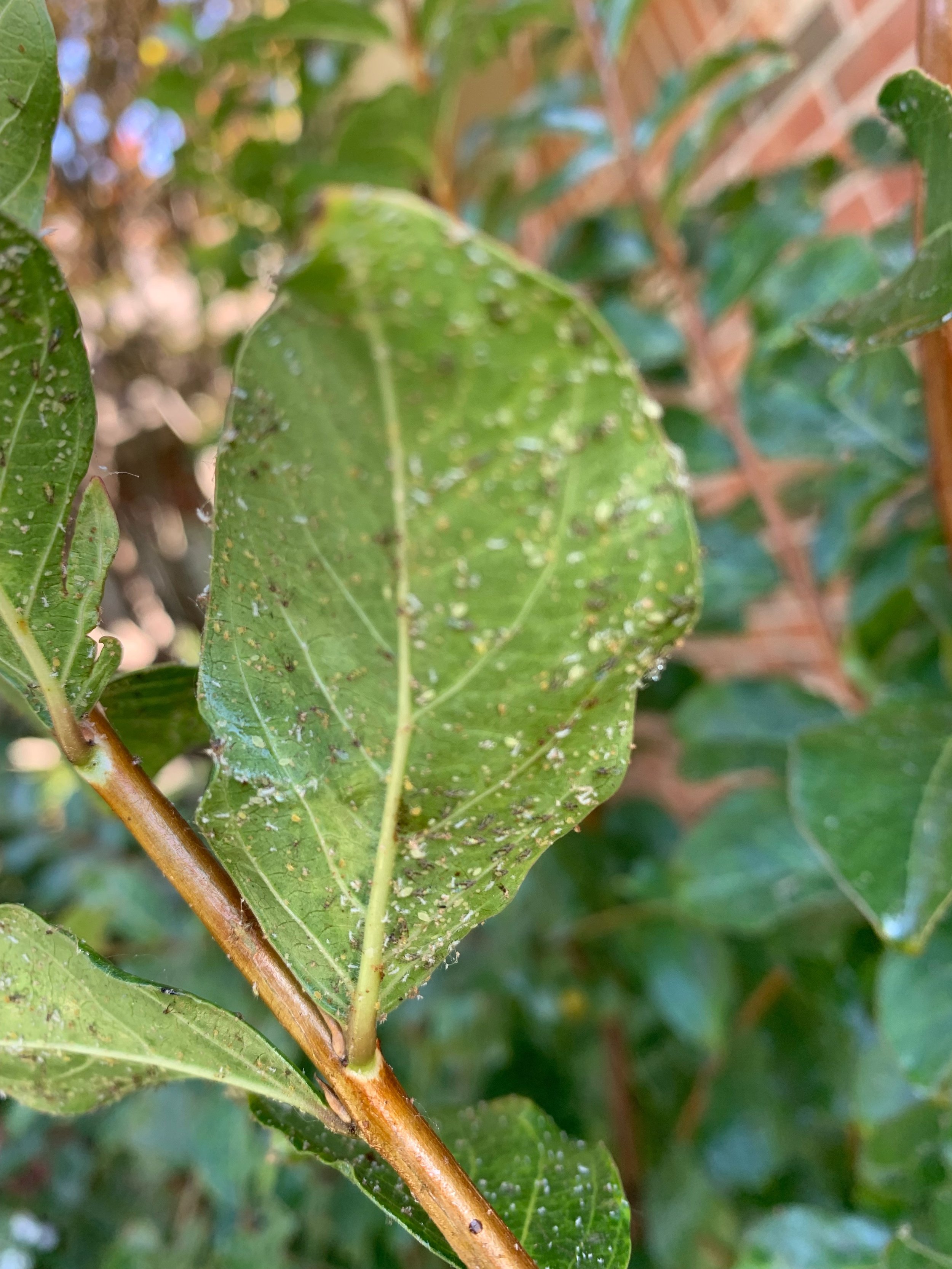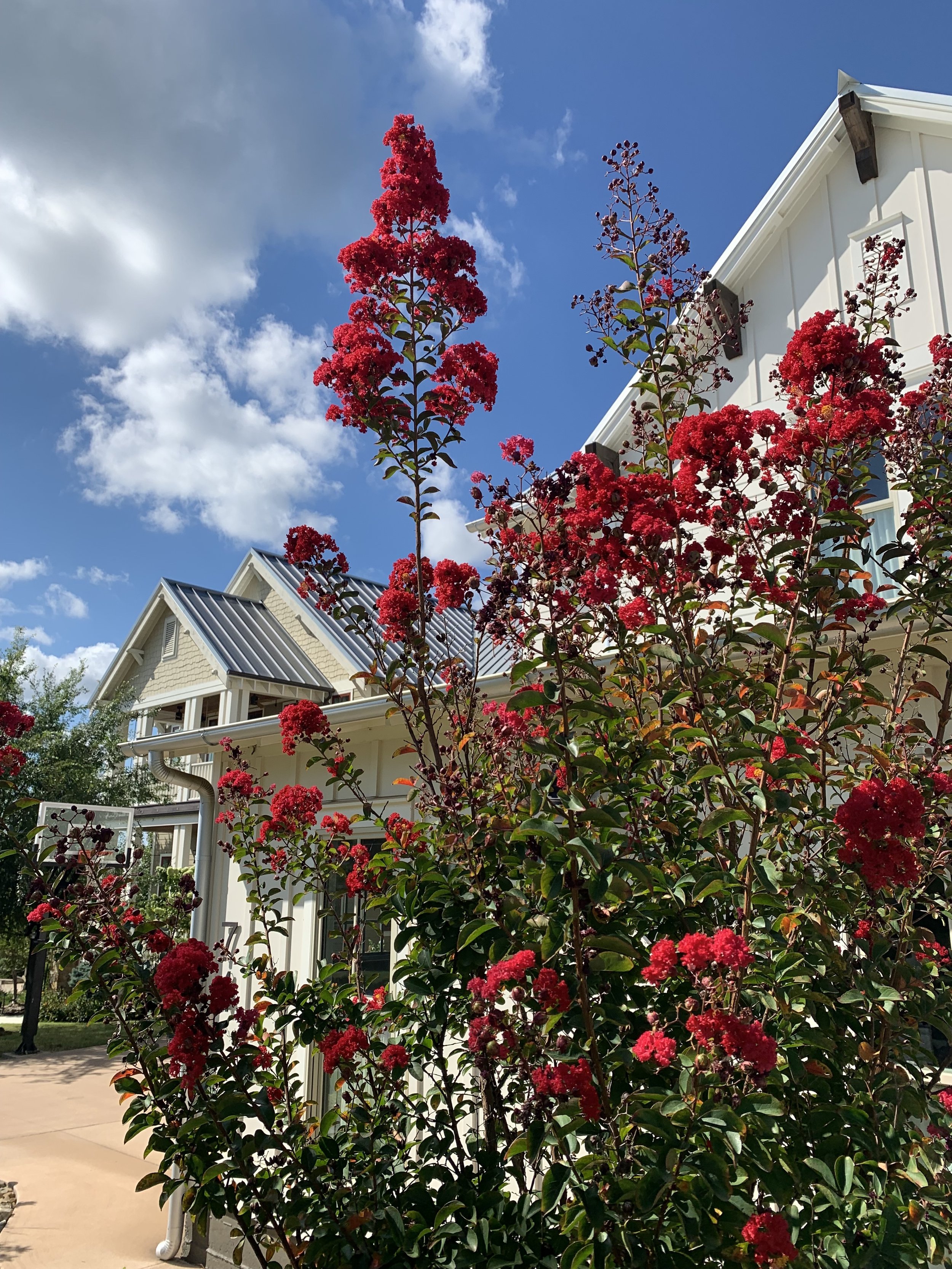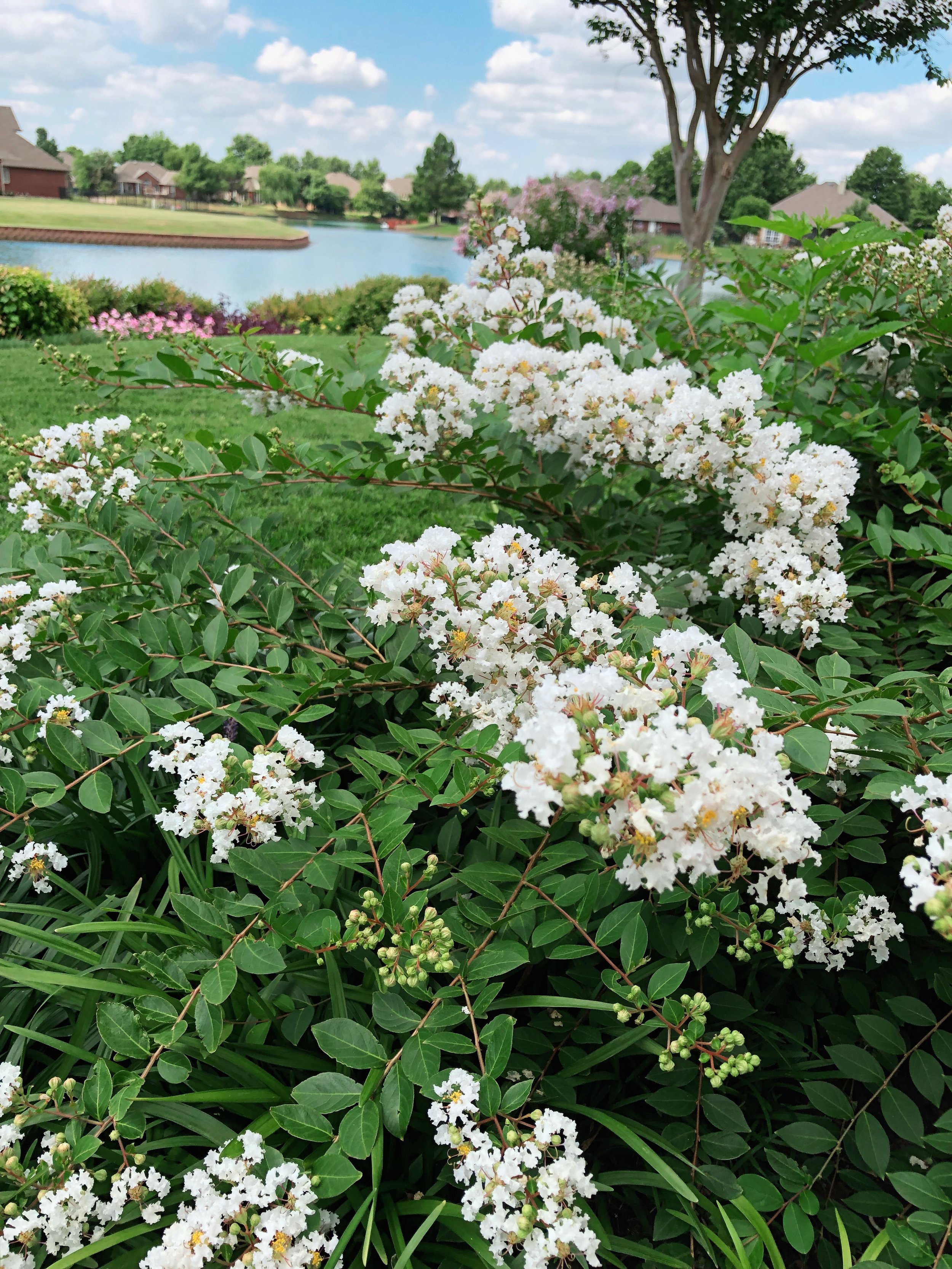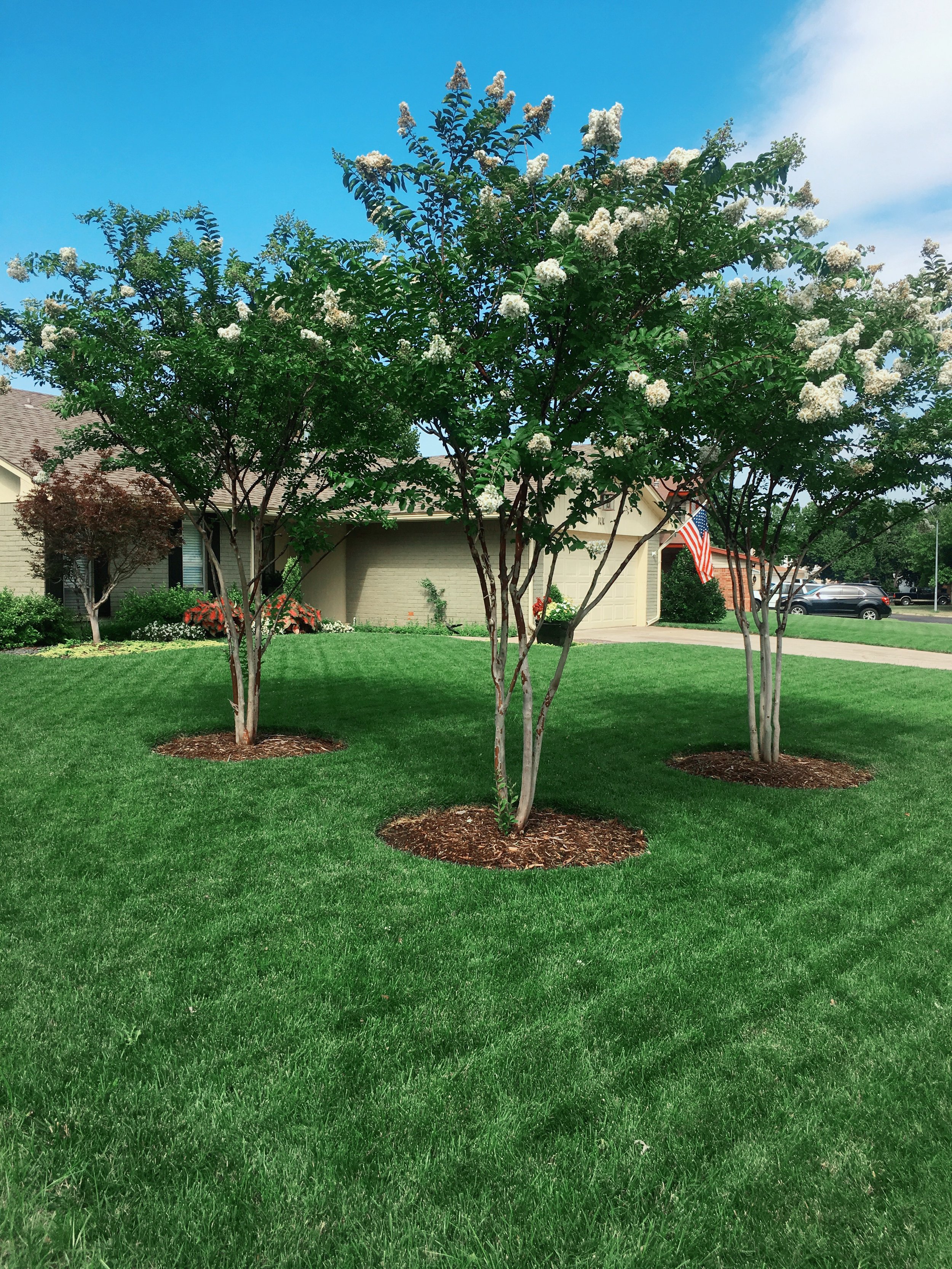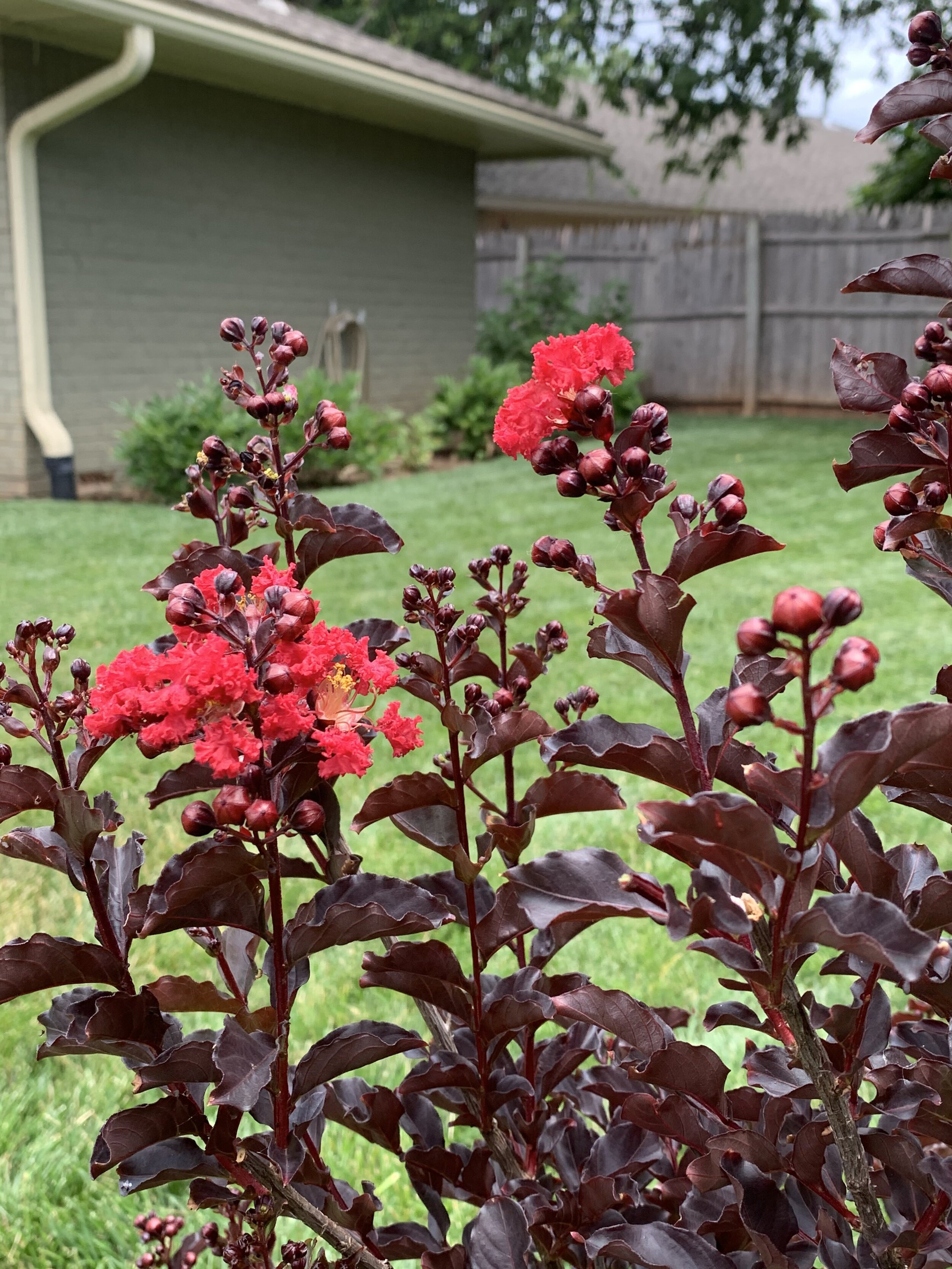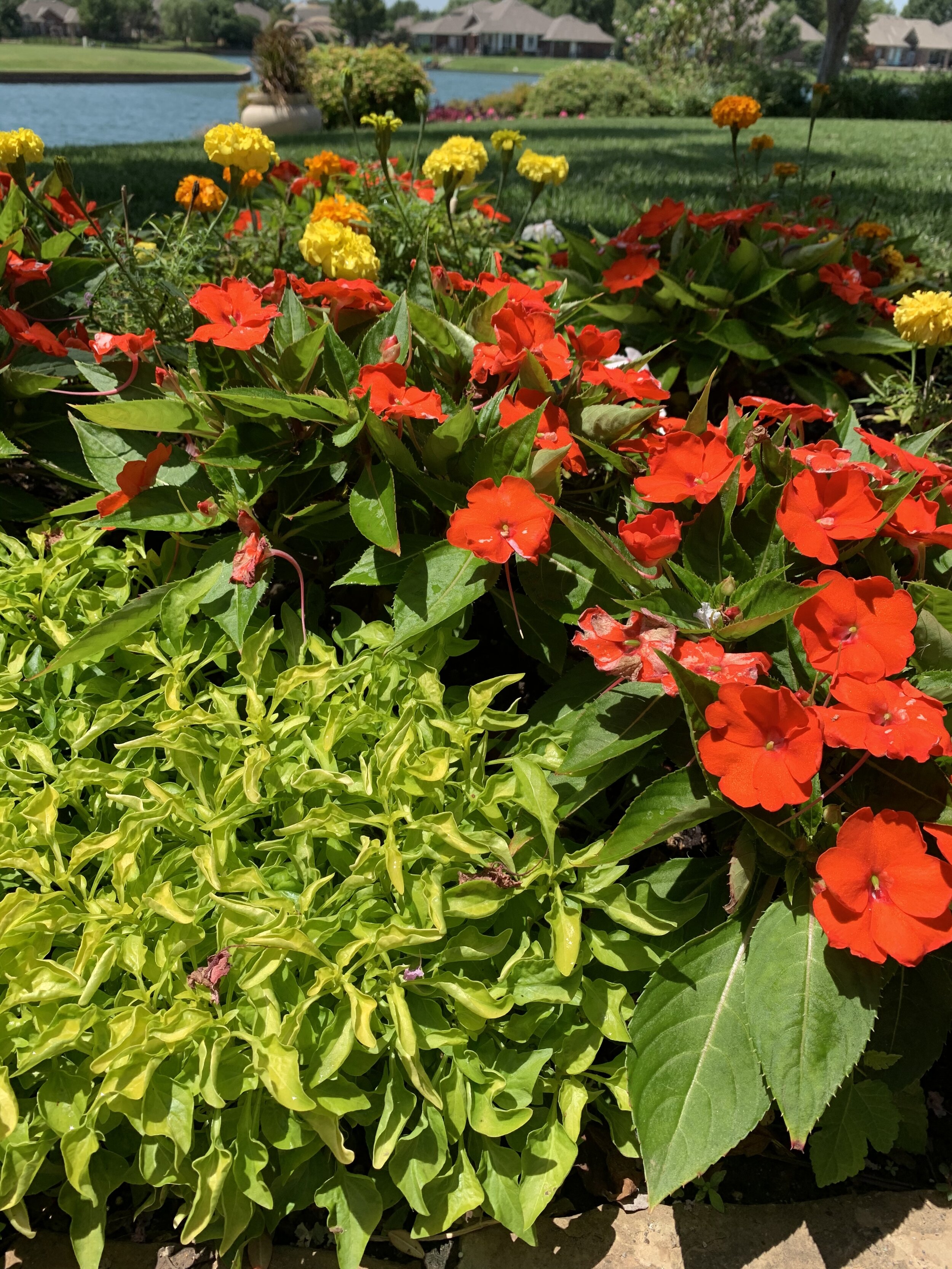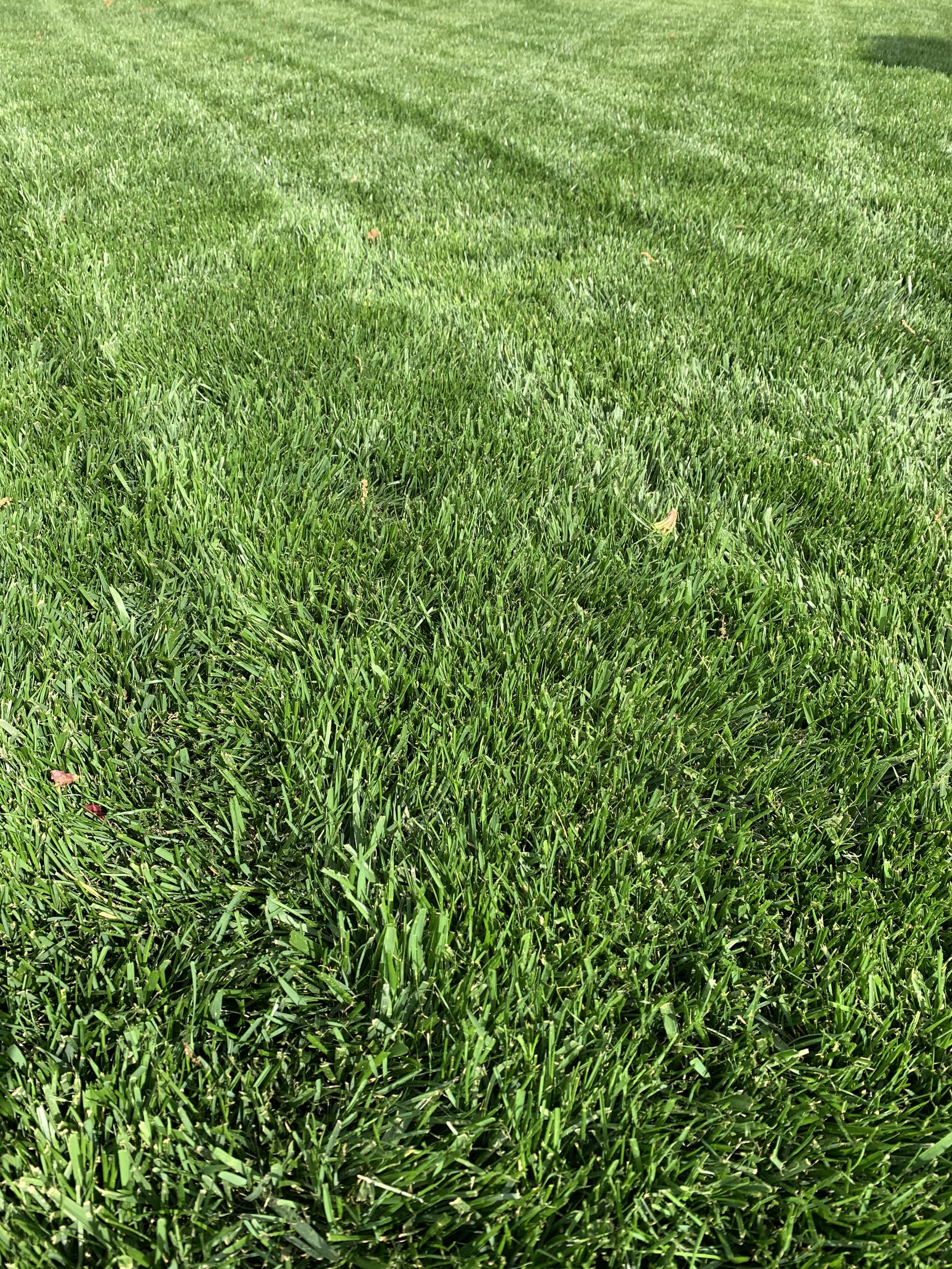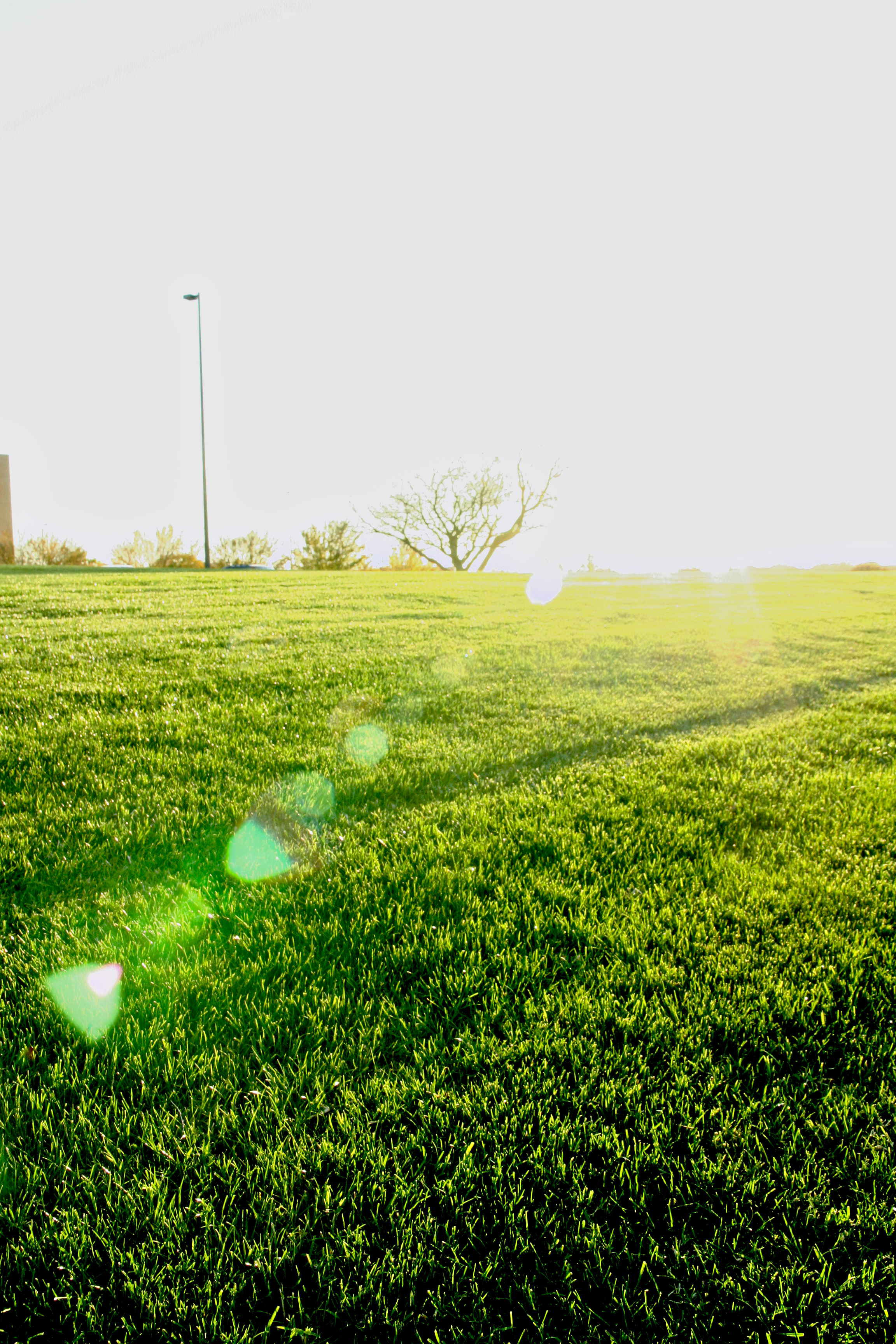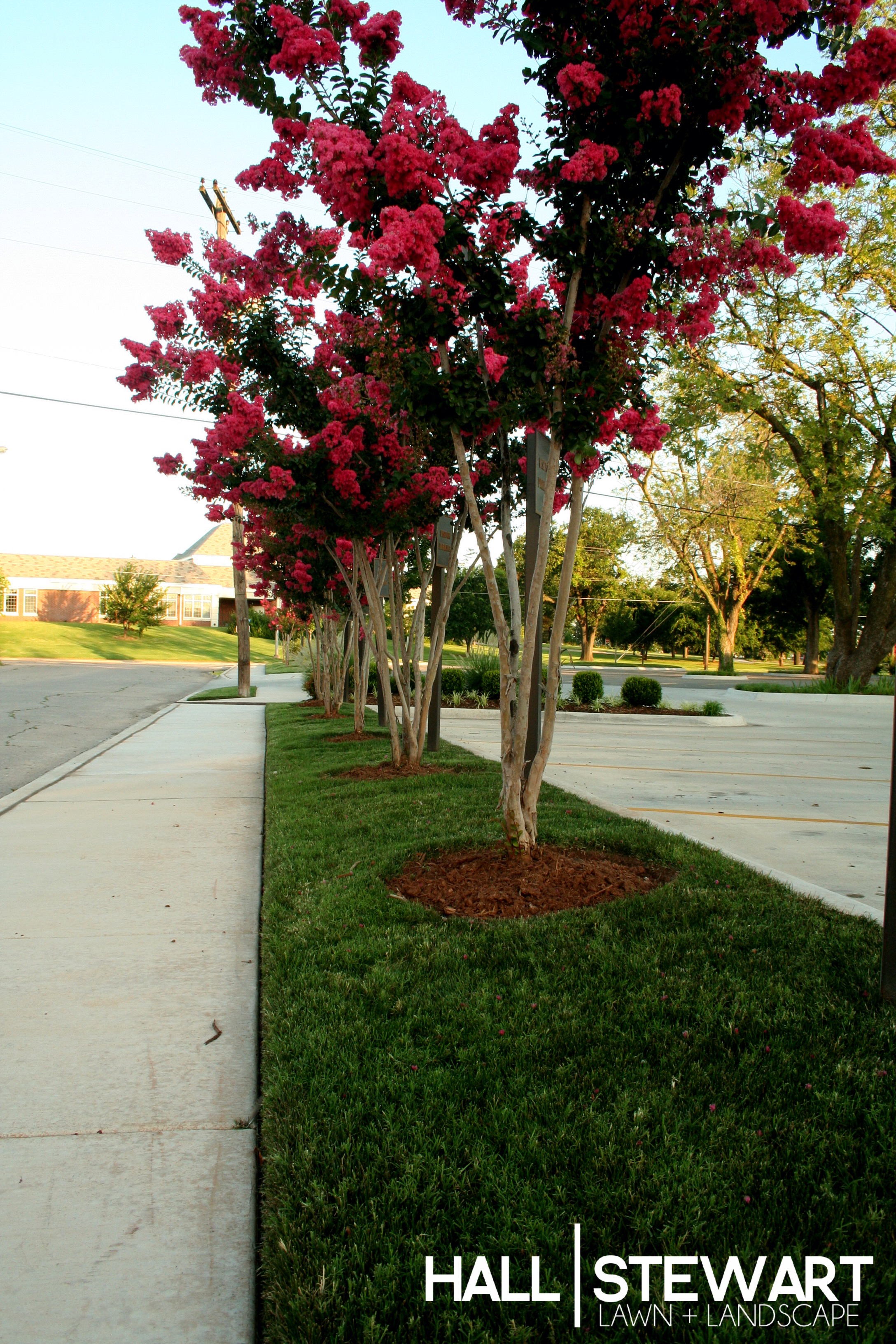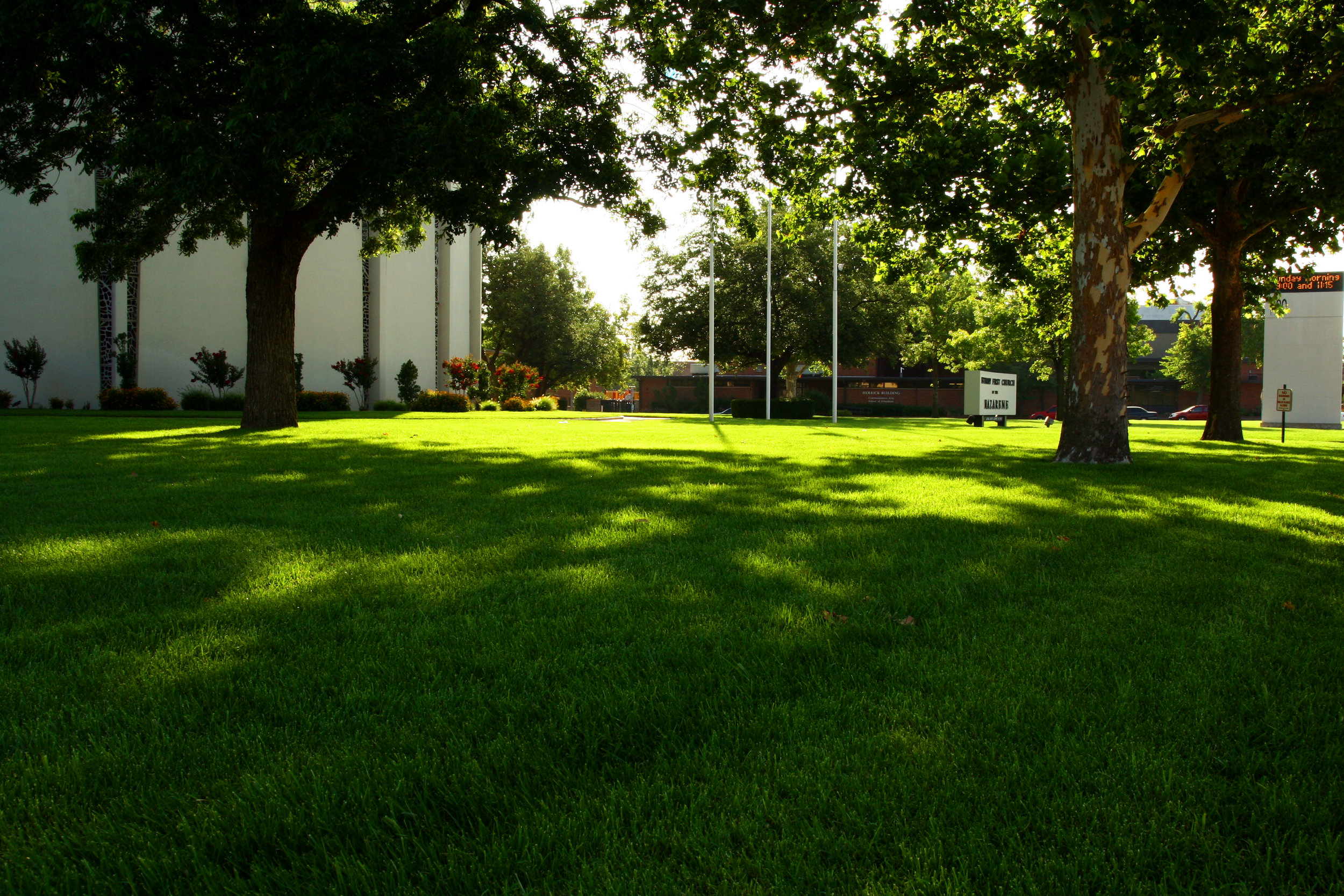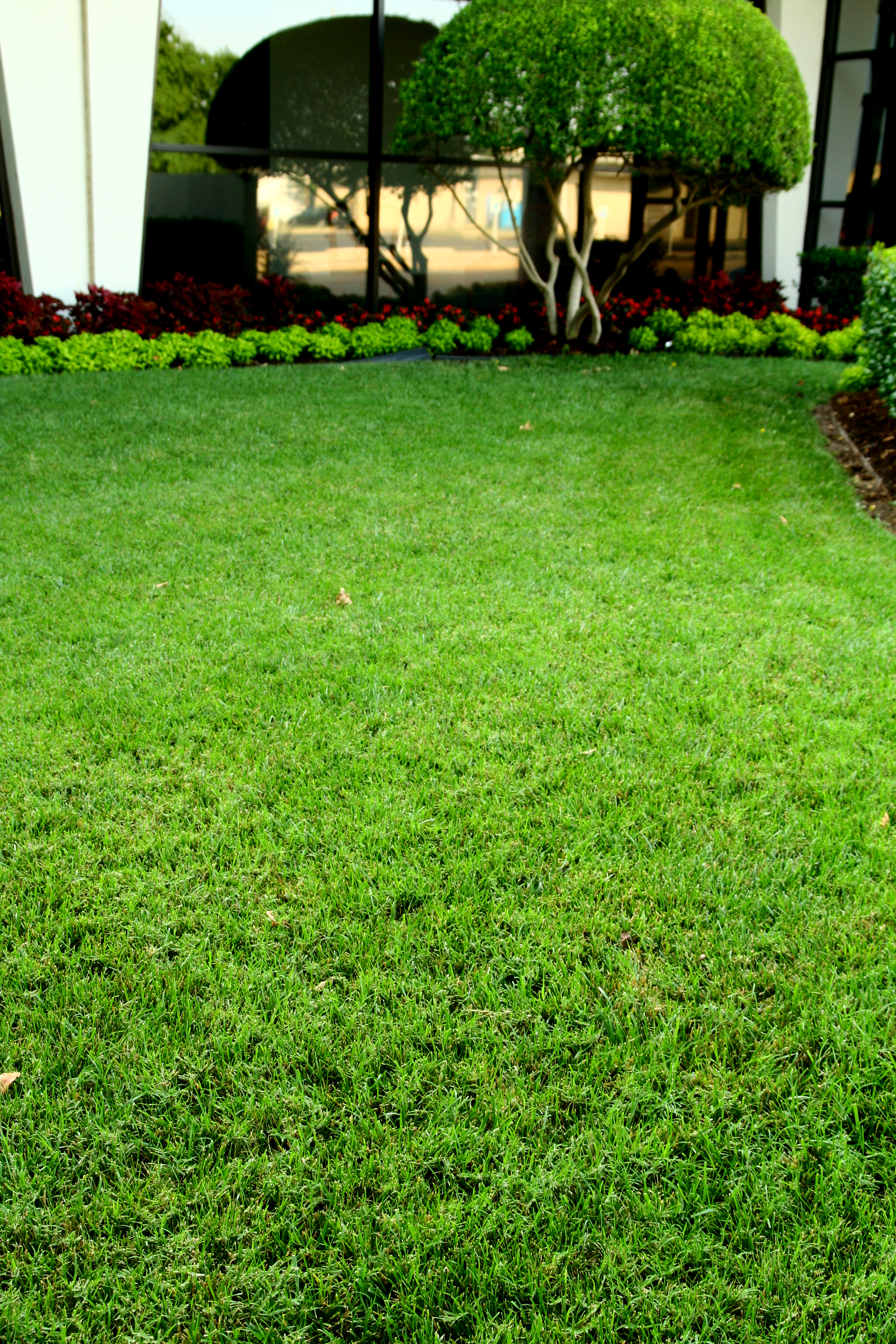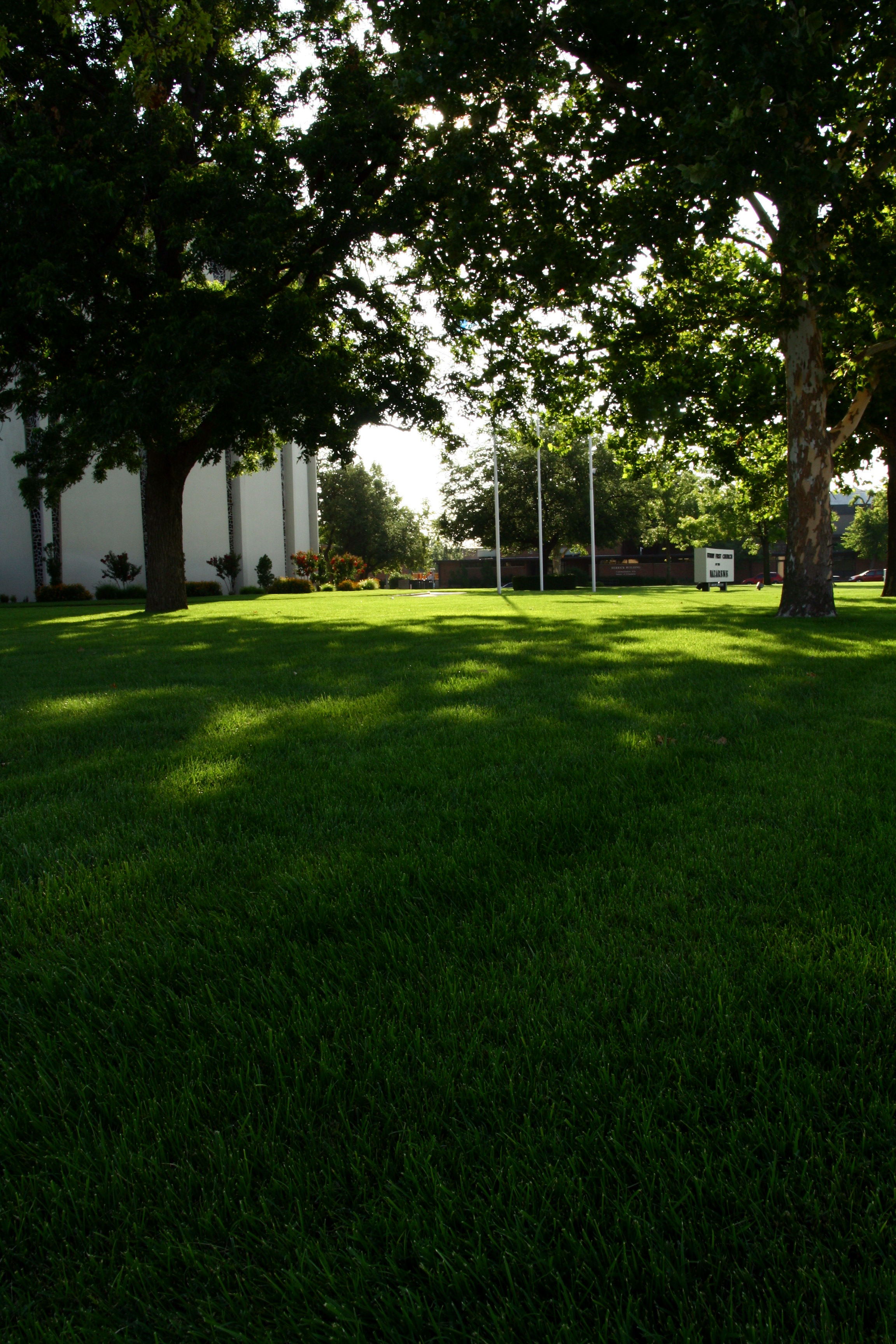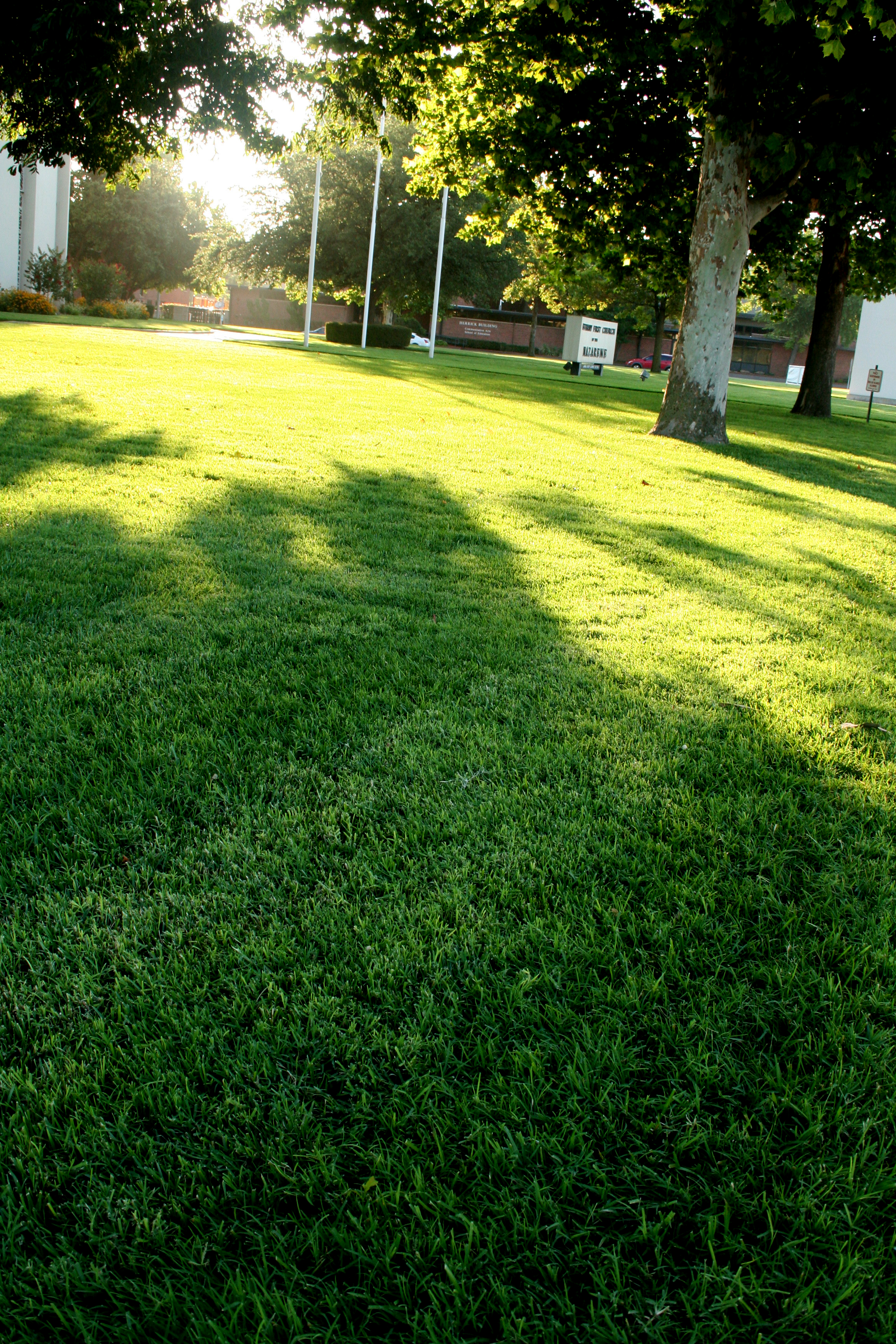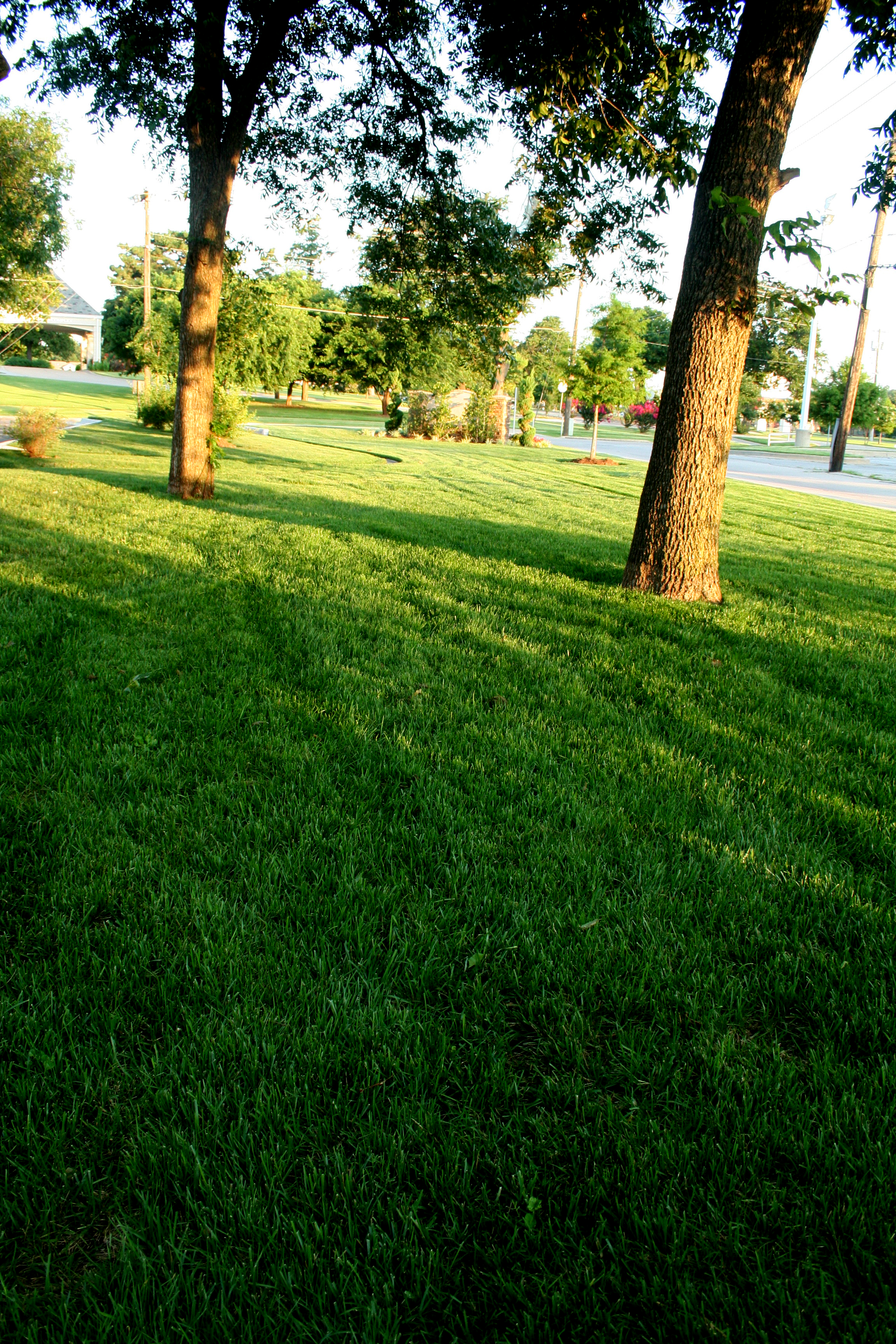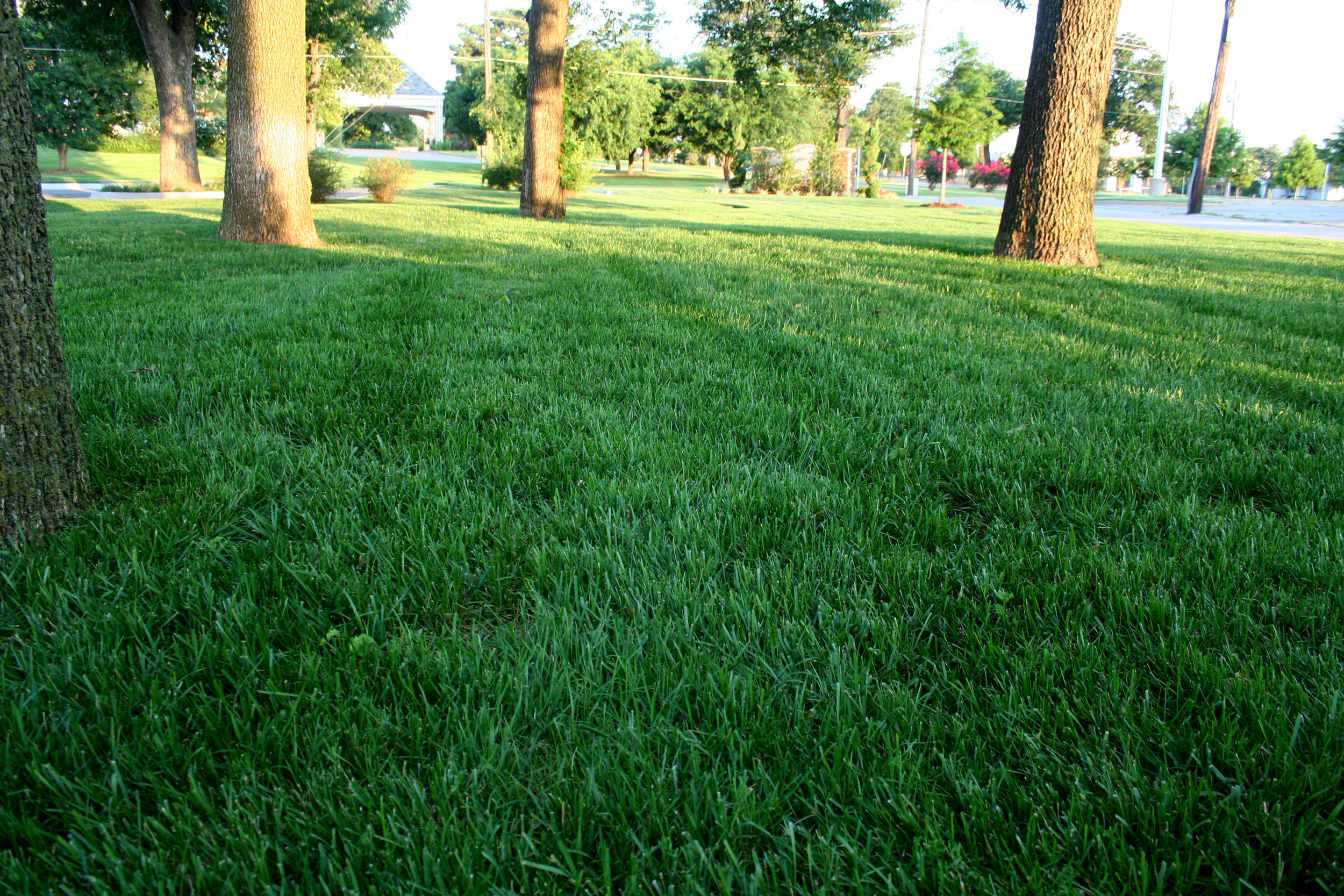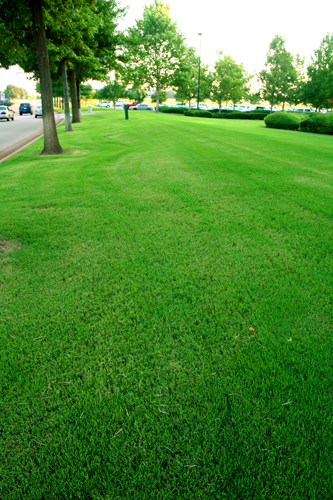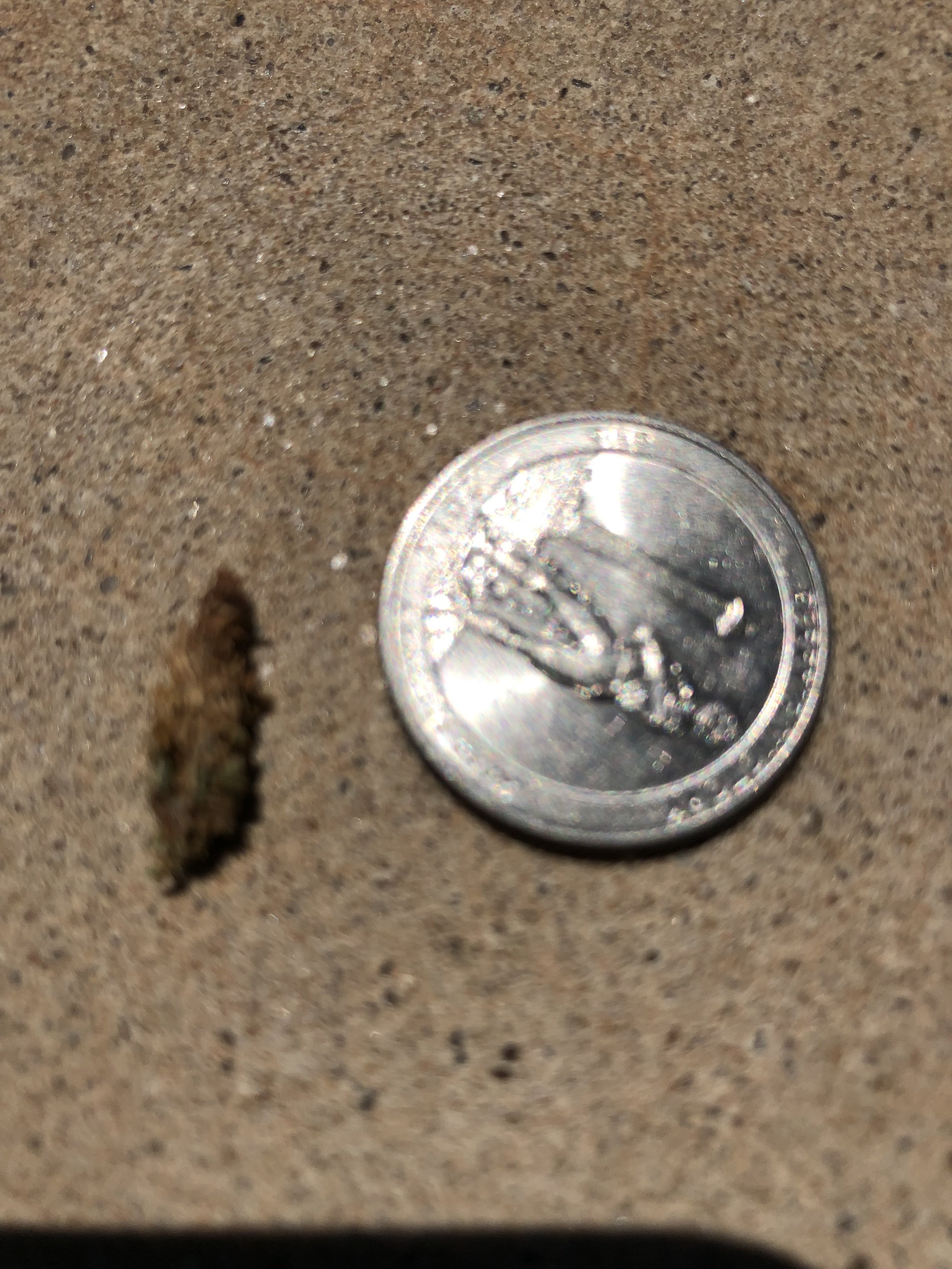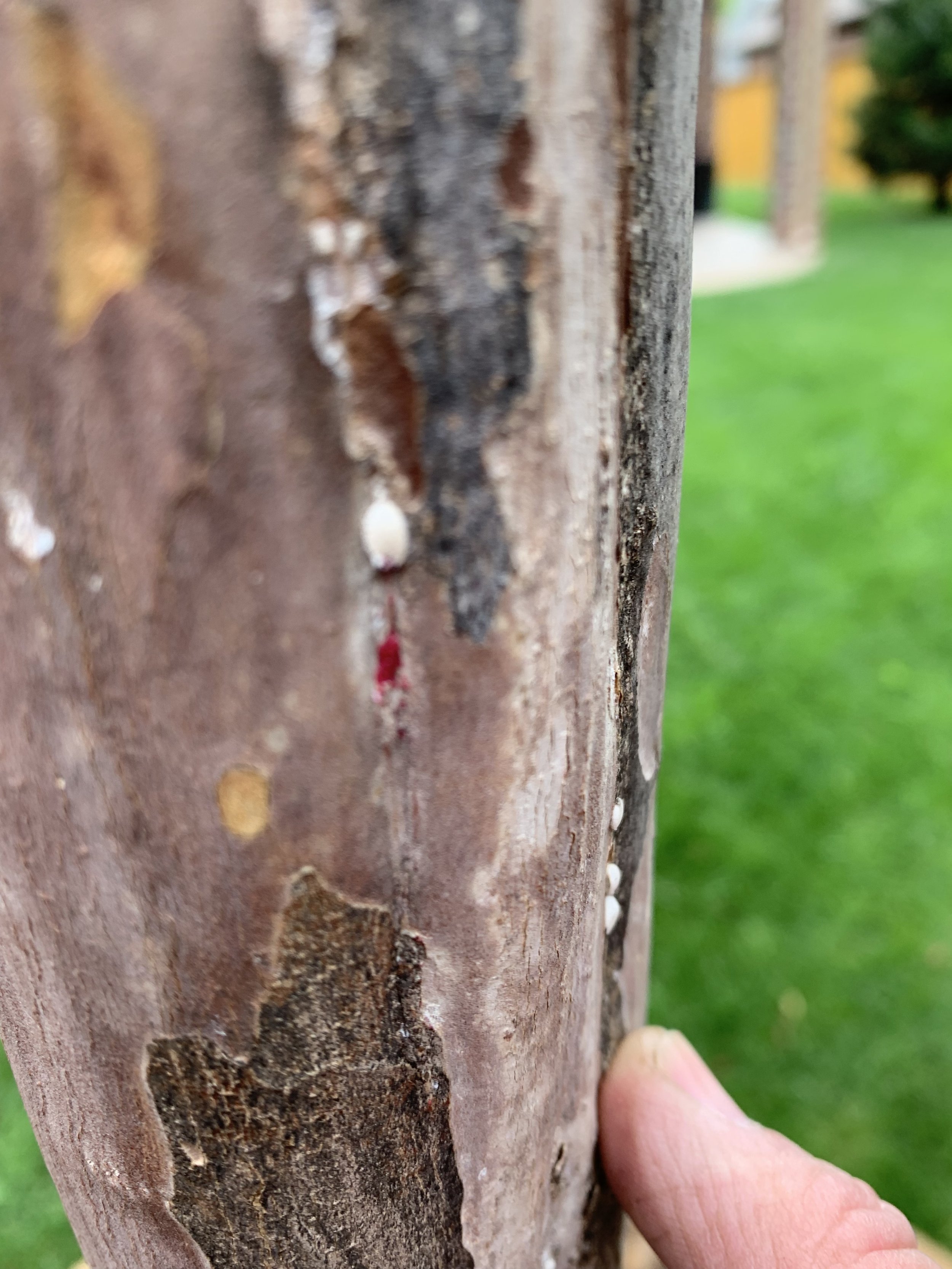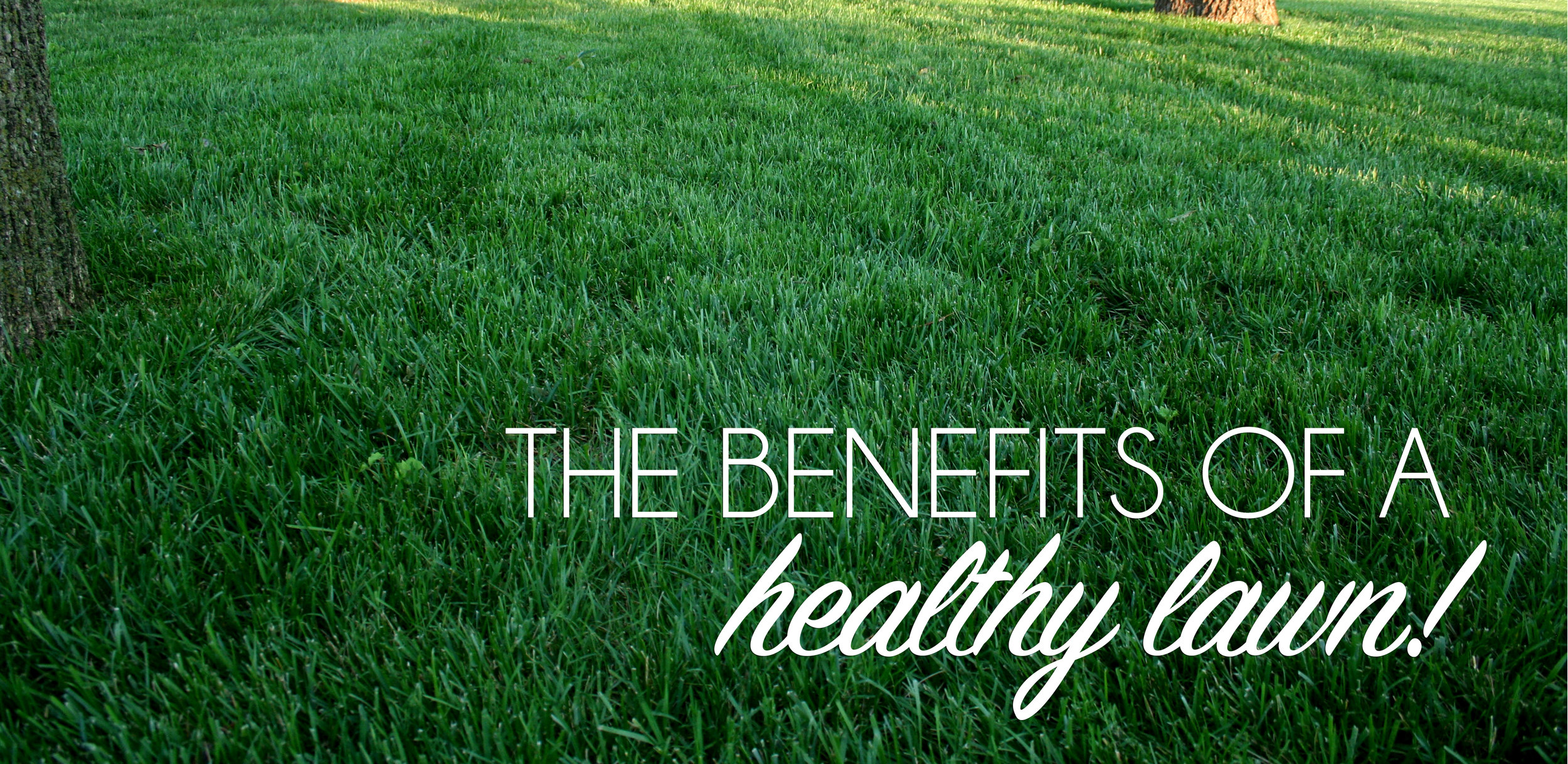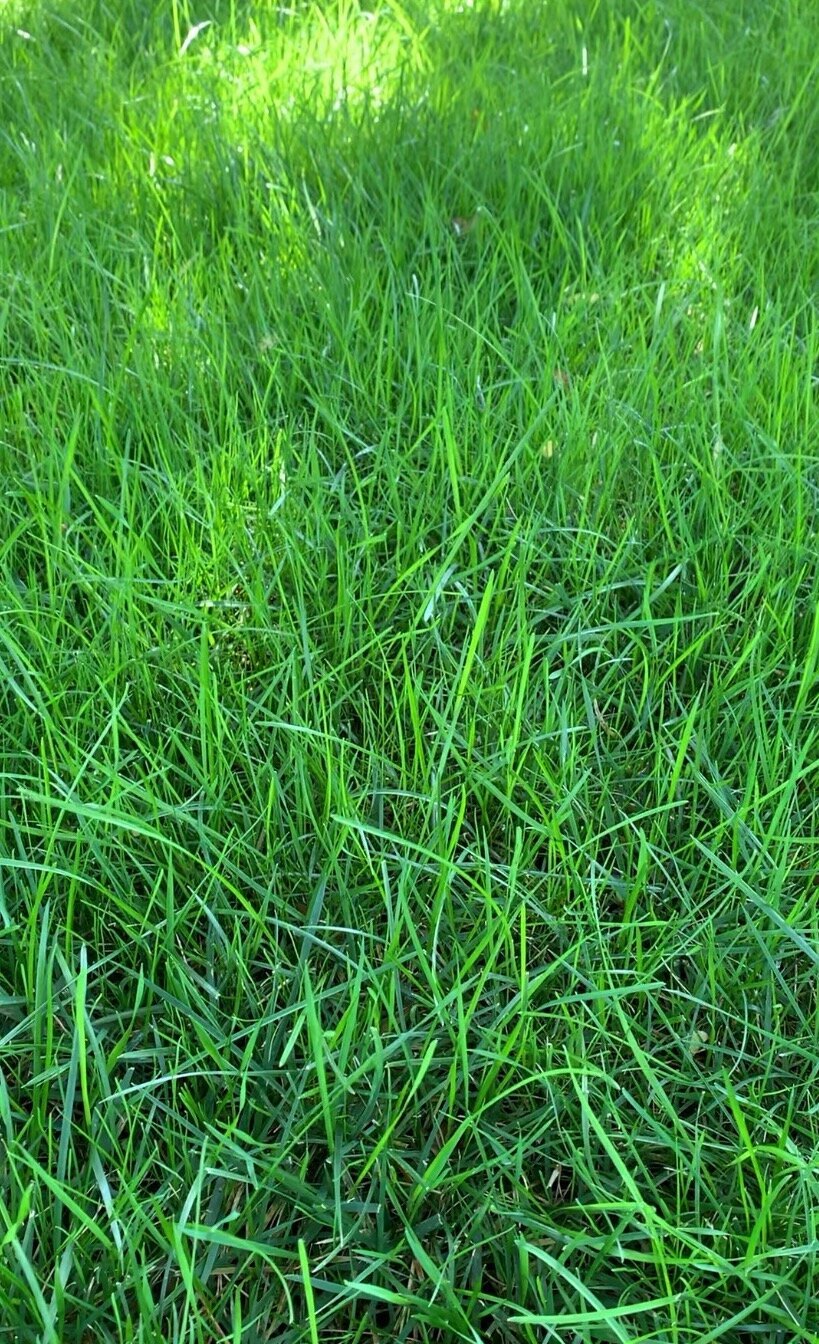
August Lawn & Landscape Tips
We have arrived at the hottest, driest point of the season. The last 10 days of July and the first 10 days of August are when Oklahoma City’s average daily temperature reaches its peak.
The key to surviving the hottest period of the season is best practices.
Best practices, not just during times of high stress, but rather it is best practices all the time that make the difference.
To finish the summer strong, here are a few best practices to focus on:
This week I started mowing my fescue lawn one setting higher. More leaf space results in better heat and drought tolerance.
Mowing – Both warm season turf (Bermuda and Zoysia) and cool season turf (Fescue) should be mowed at the highest level this month, warm season 2-2.5” and cool season up to 3-3.5”. At the higher level the lawn will have more leaf space resulting in better heat and drought tolerance. Continue to mow often enough that you are removing only 1/3 of the grass each time you cut. If you are cutting frequently enough to pass the 1/3 test, don’t catch the clippings. Allowing the clippings to decompose on the lawn will return moisture and nitrogen to the soil. Give no bagging a try. You will be surprised at how much more color your lawn will retain even in the heat. When you bag your clippings, you are tossing out nitrogen and moisture your lawn could really use this month.
Best Mowing Practice for August – Mow high, mow often, and don’t bag your clippings.
Bermuda lawns perform their best in the heat. Mow often and don’t bag the clippings. Grass clippings are mostly nitrogen and moisture. Your lawn will thank you for giving them back.
After mulch mowing, use your blower to distribute any noticeable clippings.
Well maintained Bermuda lawns can’t be beat in August. This Bermuda lawn is the result of best practices this summer: well timed lawn care applications, aeration in June, deep infrequent watering, and mulch mowing.
Brown Patch develops in fescue lawns that have an area of low air circulation or heavy shade during the summer if the area stays wet for more than 5 hours at a time. Don't create Brown Patch with your watering practices. Allow your fescue time to dry between waterings.
Healthy lawns have deep root systems. Roots will grow to the moisture. If your watering pattern is short, shallow, frequent watering resulting in moisture only in the top 1-2”, you will have a shallow rooted lawn dependent upon daily water. Deep soaking results in a root system with grass roots 6” to 2’ deep that is not dependent upon frequent watering and is drought resistant.
Remember, trees planted in the last two years need supplemental watering during the summer heat and extended dry periods. A good rule of thumb is to give them 10 gallons of water every week.
Best Watering Practice for August – Know how long you need to water to get 1 ½” water on your lawn each week. Practice deep soaking, infrequent watering.
Watering – The abundant soil moisture from the wet July start has quickly disappeared over the past week. The best-looking lawns and landscapes are now receiving 1 ½” of water per week now.
To learn how long and how often you need to water for your landscape to receive 1 ½” of moisture, place your Hall | Stewart Rain Gauge or cans around your lawn. Water using your normal cycle and then check the cups. Adjust watering times and frequency accordingly to insure 1 ½” is applied each week. Remember your landscape prefers deep soaking, infrequent watering over shallow, frequent watering. Even in the heat, lawns and landscapes are at their best when they are watered deeply as needed and not every day.
Take time to check your irrigation and fine tune it. A leaning head often is the culprit for dry spots in the lawn.
If you are unsure about your watering practices, let us help.
We can schedule an Irrigation Audit/Check to make sure your system
is operating at its peak efficiency during the summer heat.
Fertilizer – Apply fertilizer to warm season turf this month. This time of the year, Bermuda and Zoysia benefit from a high nitrogen fertilizer that is low in phosphorus and potassium.
DO NOT fertilize cool season lawns until we reach the cooler temperatures of September.
Warm and cool season turfs require different fertilizer schedules. Don’t make the mistake of trying to treat them the same when it comes to fertilizing.
Best Fertilizer Practice for August – Fertilize bermudagrass, don’t fertilize fescue. Important - Follow watering instructions after fertilizer is applied.
August is the month to be less aggressive on weed control. Because a thick turf is the most important part of good weed control, you want to avoid weakening the turf going into the fall.
Weed Control – Spring pre-emergent herbicides are reaching the end of their effectiveness in your soils. Should an occasional weed show up in your turf this month, it is best to go easy on weed control. We have reached the time of the year that damaged turf may not have a chance to fully recover before fall. Great weed control is at least 75% the result of thick turf. August is the month to focus on turf development going into the fall.
Later this month is the best time to start applying the first fall pre-emergent herbicide application. The first fall weed to germinate is poa annua (annual bluegrass). Poa annua has become more and more of a problem to control in lawns worldwide as it has developed resistance to current herbicide chemistry. For the best prevention, it is important to put a pre-emergent on your lawn between mid-August and the end of September followed by a second pre-emergent, using a different herbicide, in October or November.
Best Weed Control Practice for August – Don’t cause turf damage by over-treating weeds. Better to go into the fall with a thick turf than one with herbicide damaged thin areas.
Bermuda vs Fescue in August – Bermuda (warm season turf) loves the summer heat. Fescue (cool season turf) prefers nights below 70 and days below 90. Healthy bermuda lawns look their best in the heat of the summer. Healthy fescue will retain color, although not as much as in early summer, and growth will slow.
Fescue where there is plenty of air circulation and dabbled sunlight typically looks best in the warm weather. Fescue lawns with heavy shade and little air circulation tend to think from brown patch disease. Brown patch occurs in fescue lawns anytime the grass stays wet for 5 hours or more at a time and nighttime temperatures are in the 70s. During the hottest and driest time of the season, brown patch is often self-inflicted by watering your fescue in the morning and evening, a common by incorrect watering habit on fescue lawns in July and August.
Inspect Shady Lawn Areas - September through October is the best time of the year to establish fescue. Now is the time to assess the areas of the lawn where bermuda has become thin due to increasing shade (Bermuda needs at least 6 hours of direct sunlight to be thick), areas of the lawn where fescue did not perform well because of very dense shade (Fescue needs at least some dappled sun), and areas of fescue that have been damaged by brown patch this summer. Because fescue does not spread you should plan on adding some seed every fall.
Best Fescue Lawn Practice for August – Inspect and evaluate your turf. Check shade patterns and make a plan for overseeding low light areas with fescue this fall.
Need Help Evaluating Your Shady Areas?
We would be happy to evaluate your shade and make a recommendation.
Just give us a call at (405)367-3873 or respond to this email.
Insect Watch – If grubs have been a problem in your lawn, August is the time to apply an insecticide. Remember, the insecticide will kill desirable insects also. Only treat for grubs if there is evidence of a problem.
Continue to inspect shrubs for aphids and treat as needed. A common host plant is the Crape Myrtle.
Inspect your trees and shrubs for active bagworms. If you need help controlling bagworms, give us a call. When possible, remove and throw away bagworms. Don’t toss them on the ground because they will crawl back onto your plants.
Watch for webworms in your trees this month. The later generations of webworm are the ones that cause damage. If noticed early when the webbing is small, simply cutting the branch out is the best control. If spraying is required, you must penetrate the webbing to gain control.
Best Insect Control Practice for August – Spend a few minutes inspecting your lawn and landscape for insect activity. Treat as needed.
A common problem on Hackberry trees in the summer is nipple gall. Unfortunately little can be done to control gall-making insects.
When you remove bagworms please dispose of them. This little guy is slowly climbing back up a tree to do more destruction.
This summer’s Crape Myrtle colors have been brilliant.
How is your summer color doing? This year my planting of Joseph Coat, Sunpatiens, Lantana, and Penta has put on a great show.
Limelight Hydrangeas can’t be beat for colorful summer shrub. This is a ‘Little Lime’ and is great for smaller areas.
Landscape Color – How has the color been in your landscape this season? Sometime this month take pictures and make notes of the plants that are doing the best in your landscape.
Black-eyed Susan’s are the perfect perennial to add color to the landscape during July and August.
Crape Myrtles are loving the warm days and rewarding us with abundant summer color this year.
Limelight Hydrangeas continue to brighten the landscape even on the hottest of days.
Lantana, Penta, and Periwinkle are at their best now.
What is adding great color to your landscape right now? We want to know. Send pictures please.
Lantana is one of the best heat-loving annuals and with so many varieties, there is a right one for every landscape.
Angelonia is becoming a favorite summer annual. It has profile spikes of color and is available in white and shades of pinks and purples.
Crape Myrtle and Black-eyed Susan’s are a great color combination for late summer color.
Coleus is a great summer annual with big colorful leaves that at interest to the summer landscape.
Black-eyed Susan’s add a splash of bright color to the hot summer landscape.
Lantana is one of the best annual color plants for a summer filled with above average temperatures.
Shasta Daisies are nearing the end of their summer color show.
The best perennial plantings are the ones that have something blooming spring to fall. I challenge you to find another perennial that puts on a better color show in August than Black-eyed Susans.
Keep faded blooms pruned off and you will extend their bloom time a few more weeks.
August is a great time to evaluate your summer annual color and make notes on what worked and what didn’t. This planting of Sunpatien, Begonia, Penta, Joseph Coat, and Melampodium started the summer looking great. But over the last few weeks the Melampodium has over powered the rest of the color. Note: “If using Melampodium plant it in the back.”


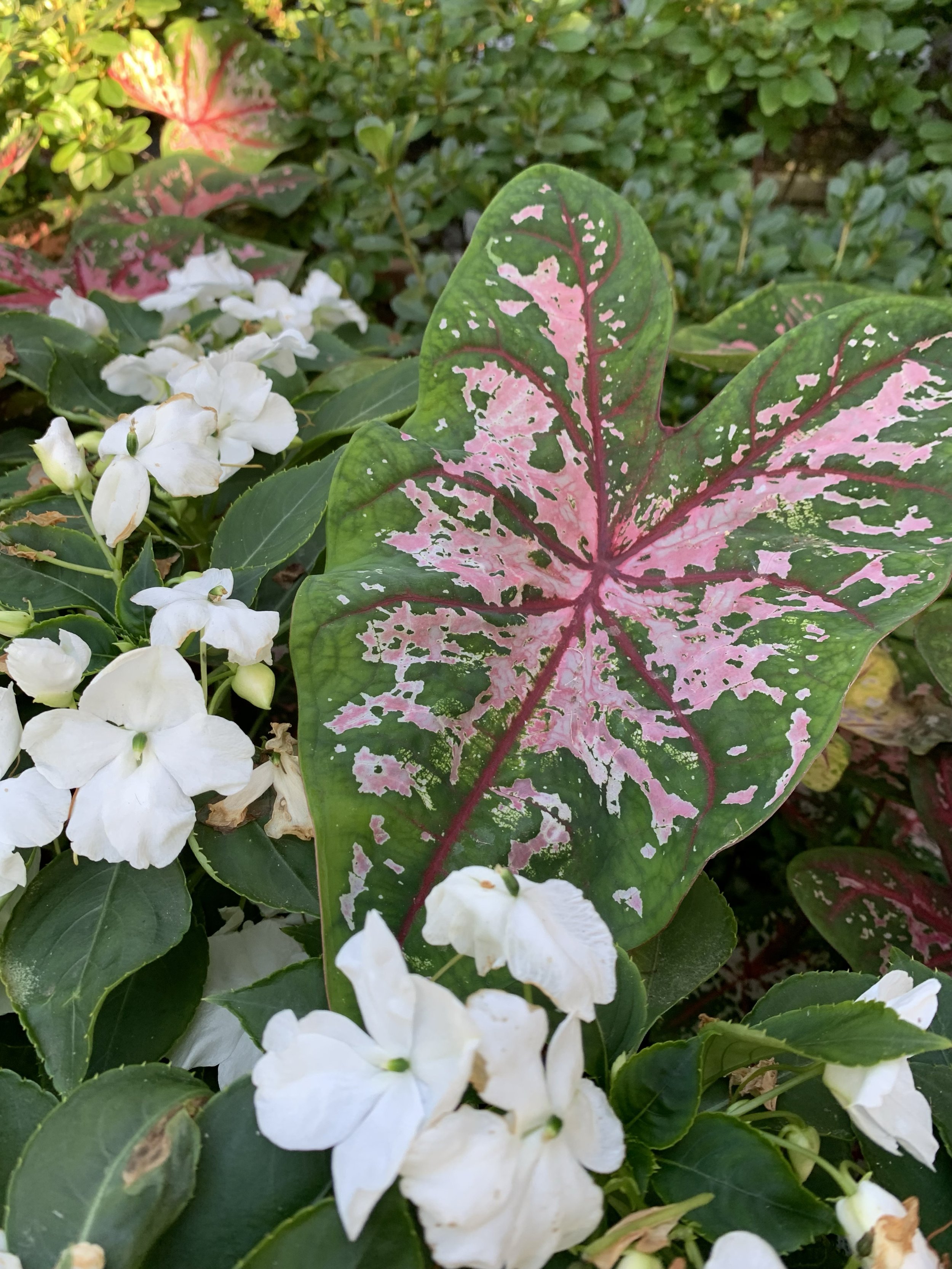
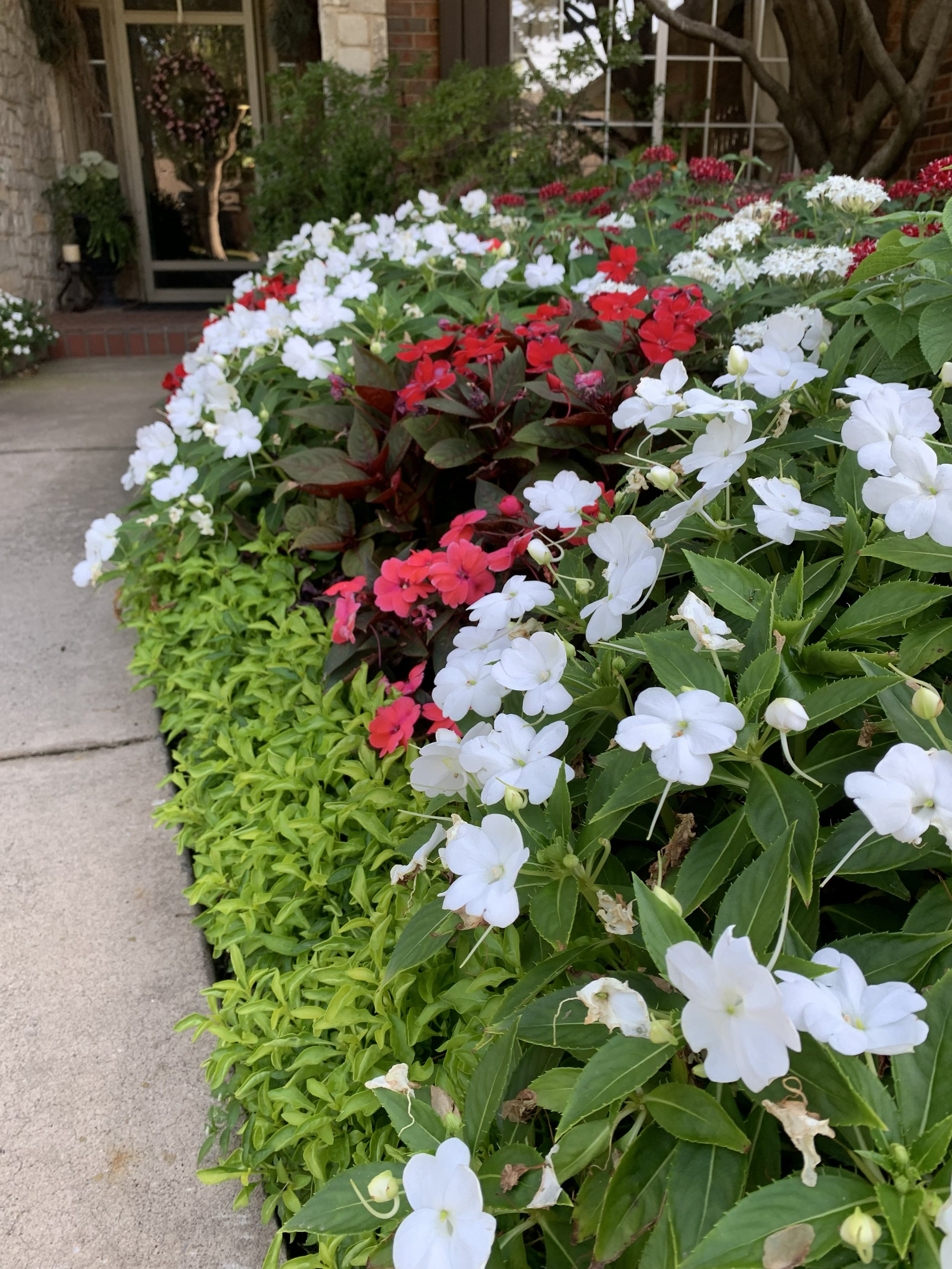
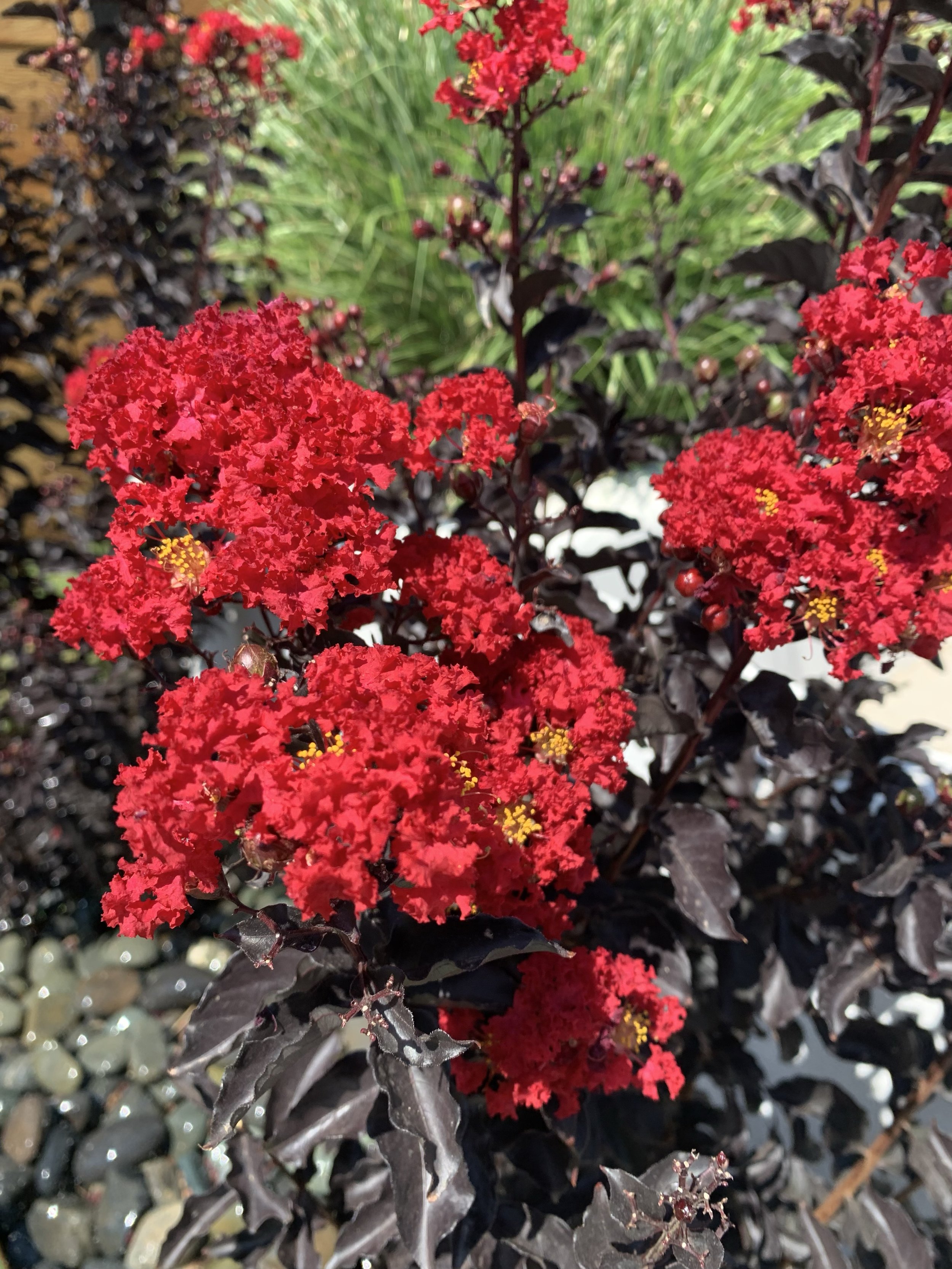
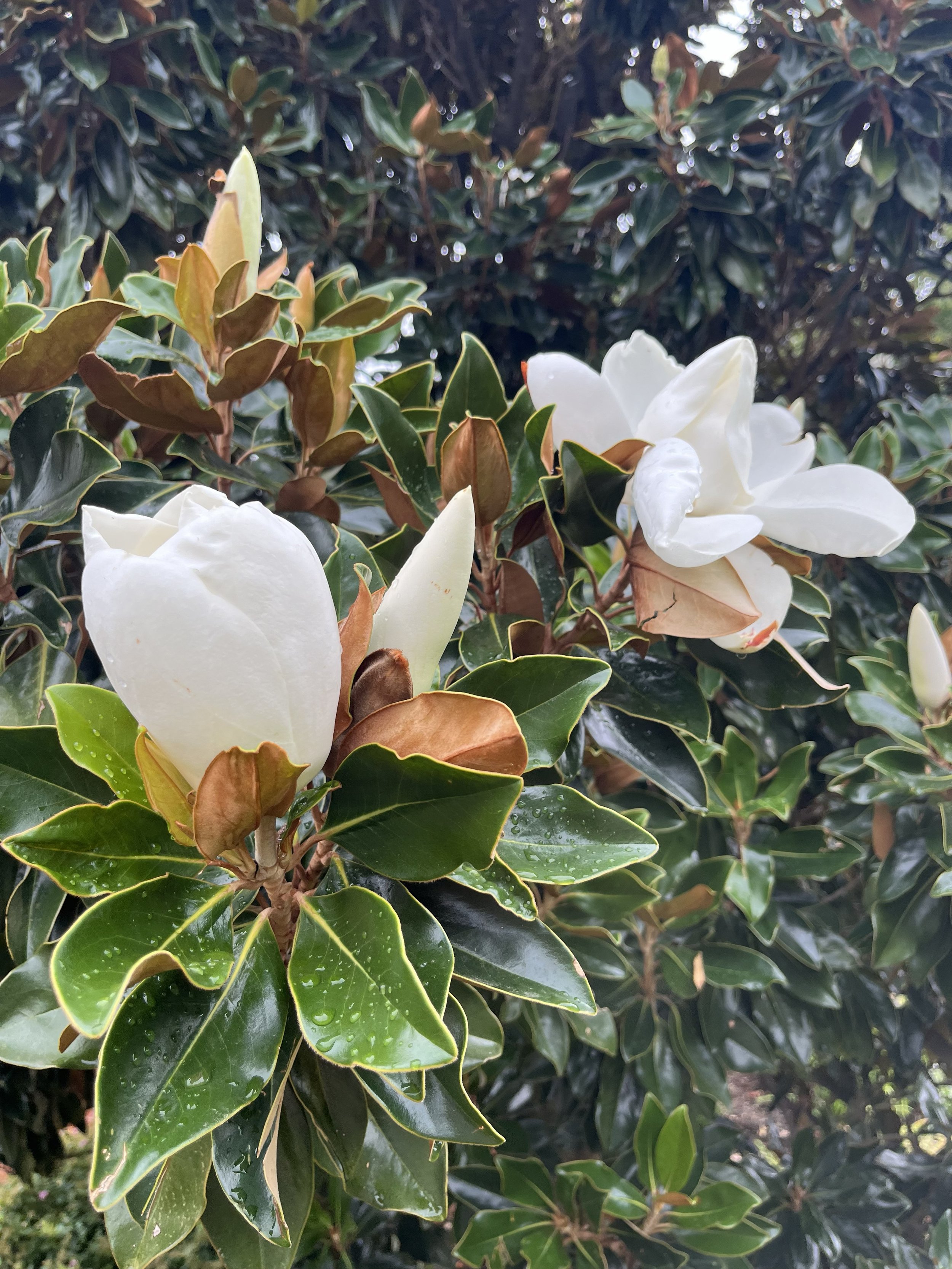

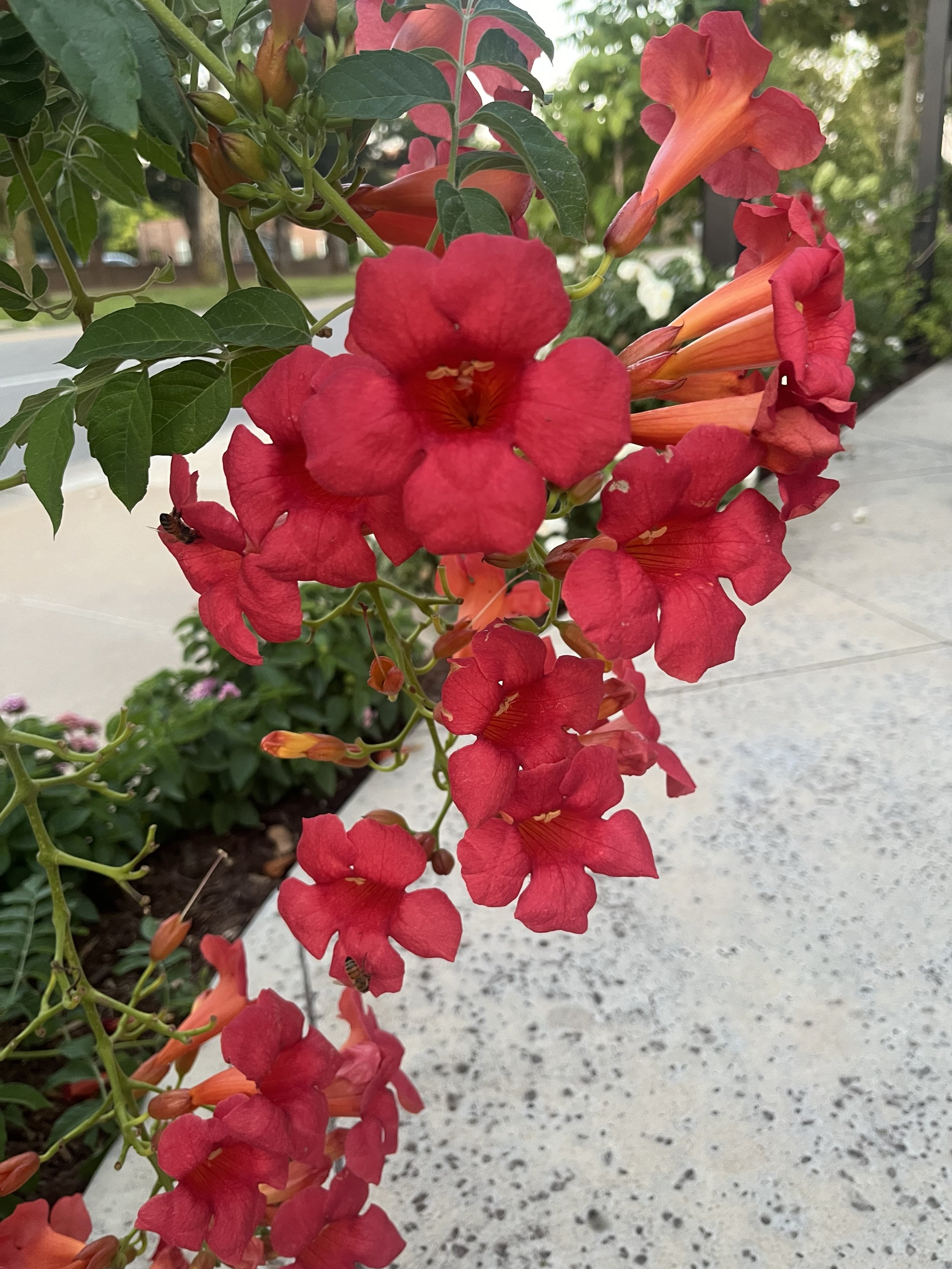
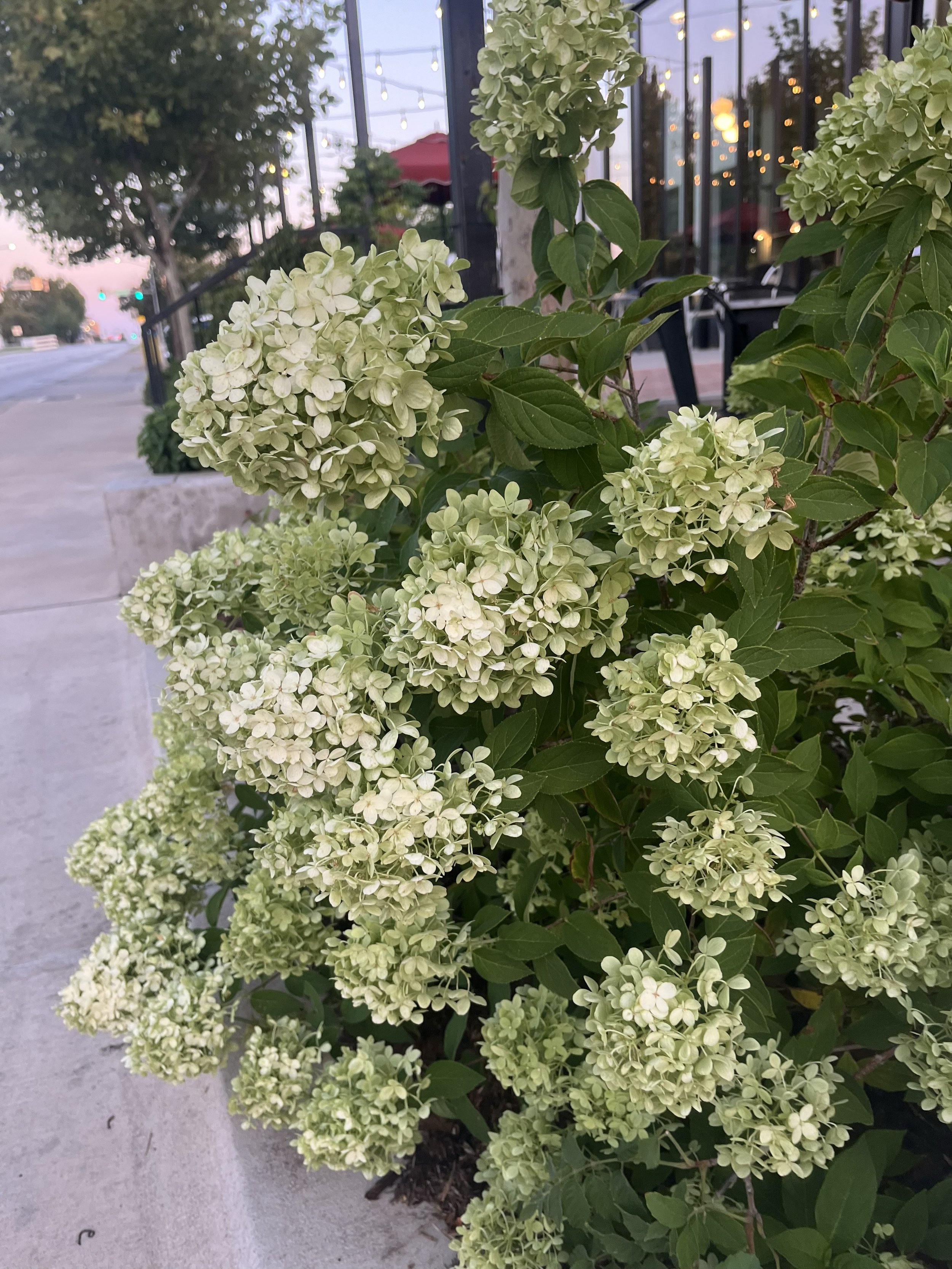
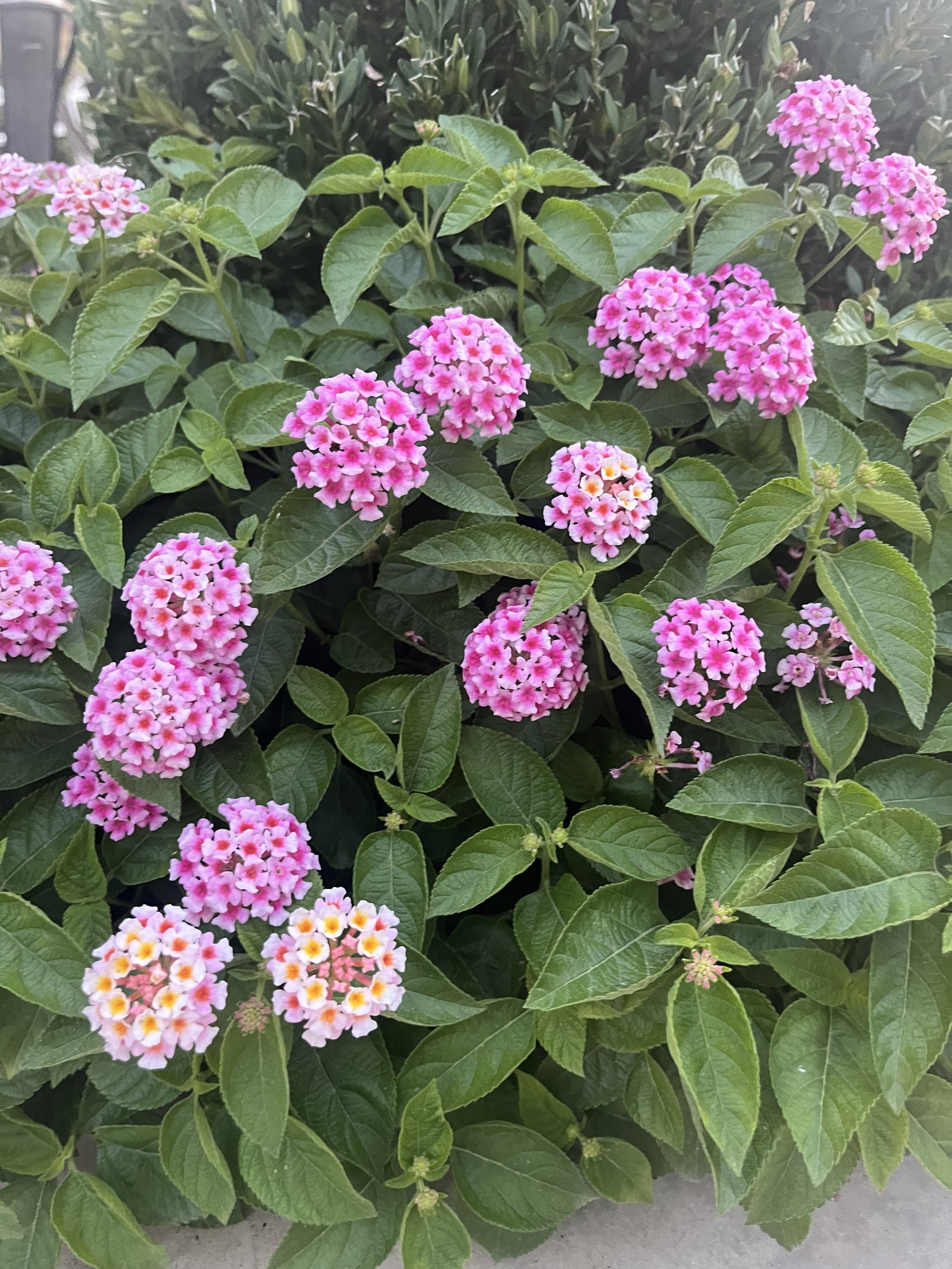
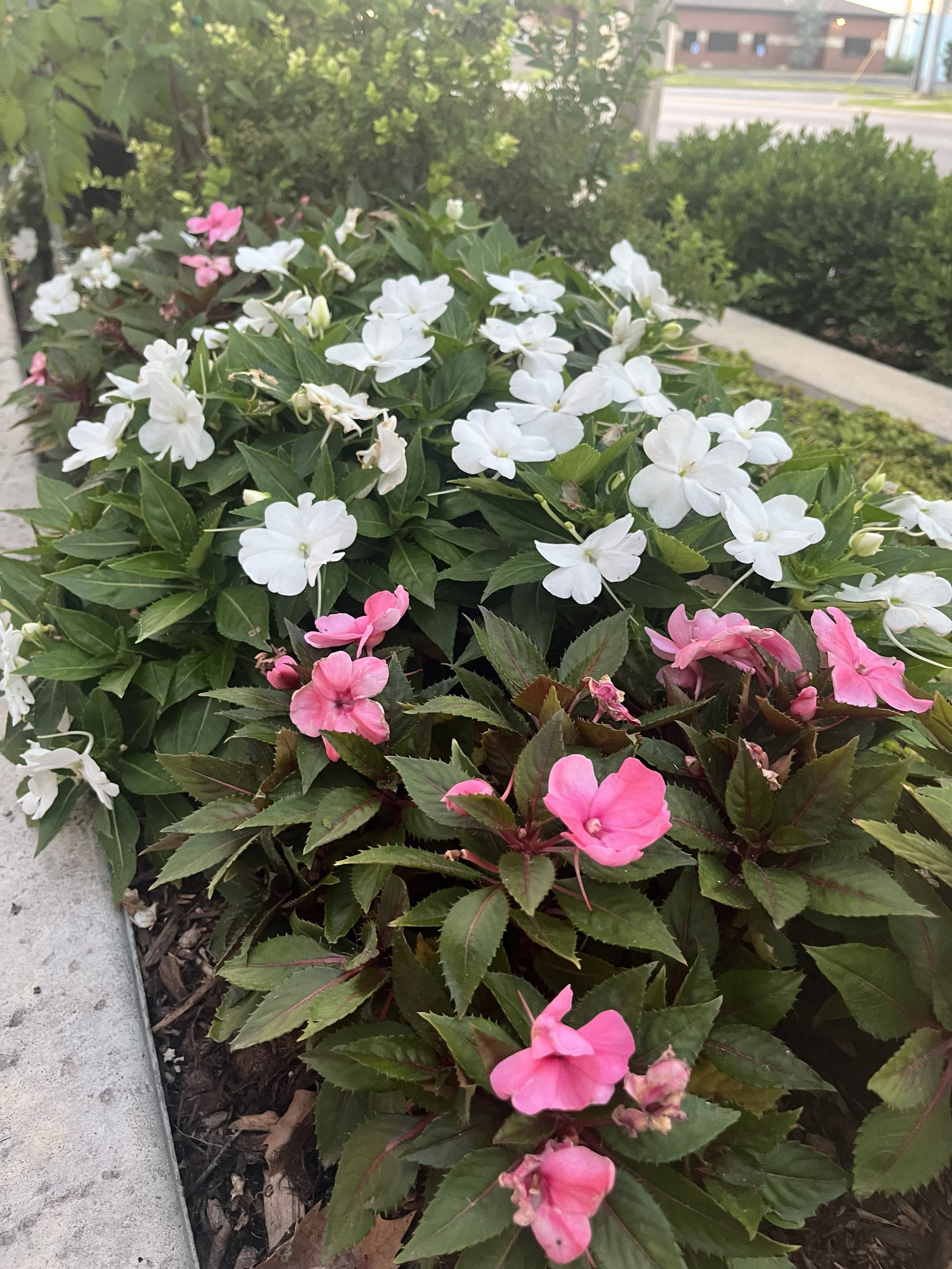
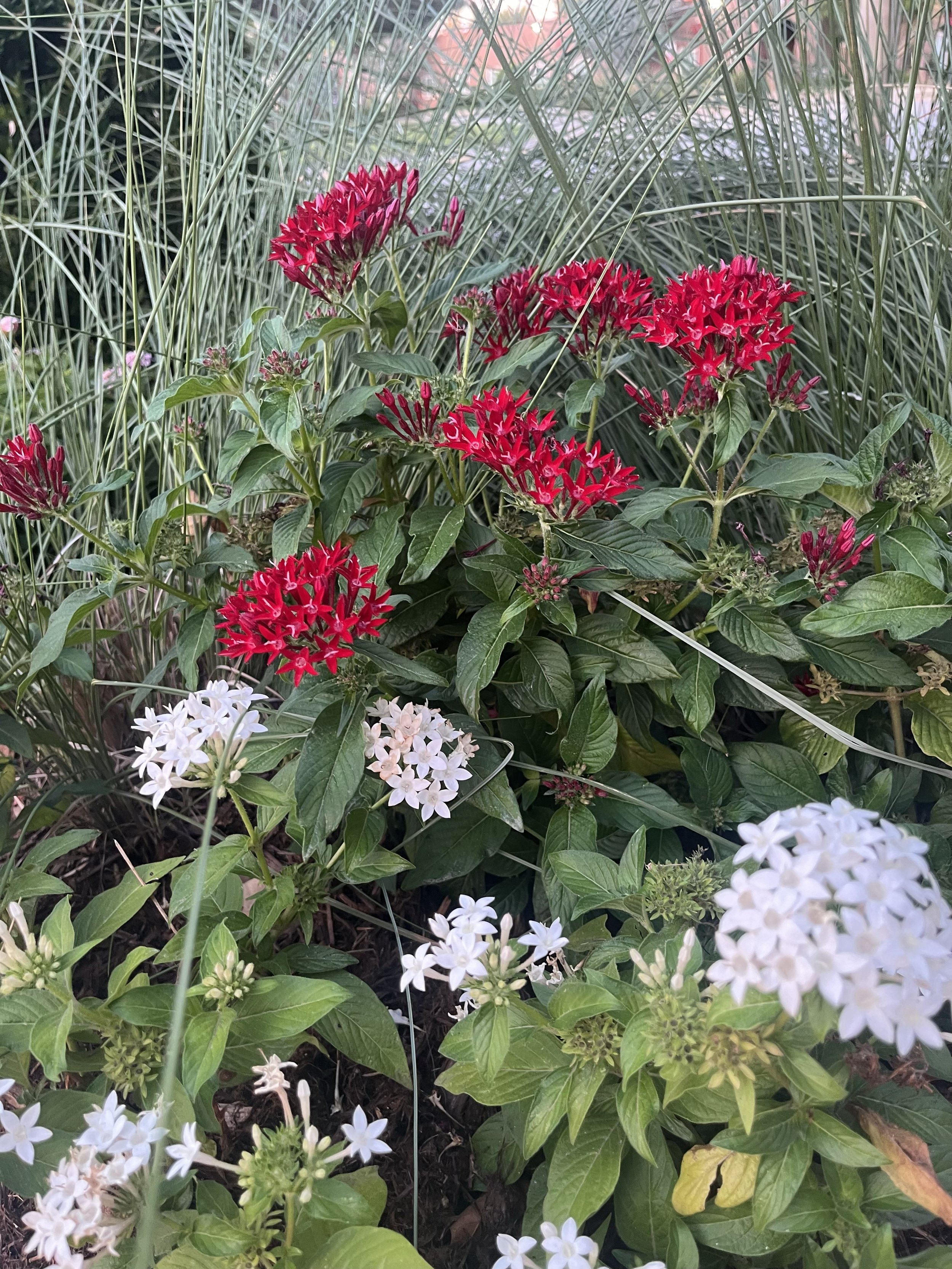
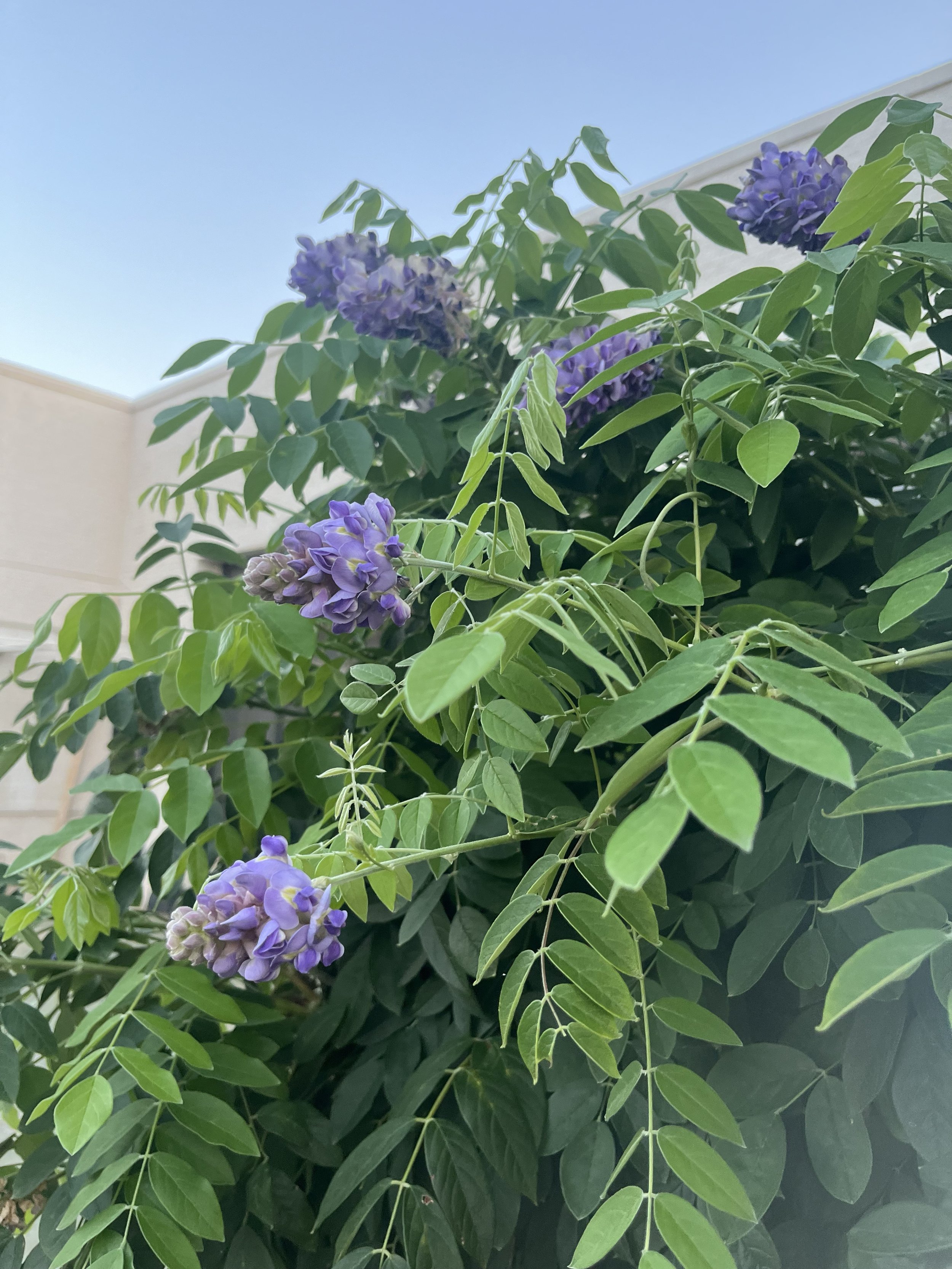
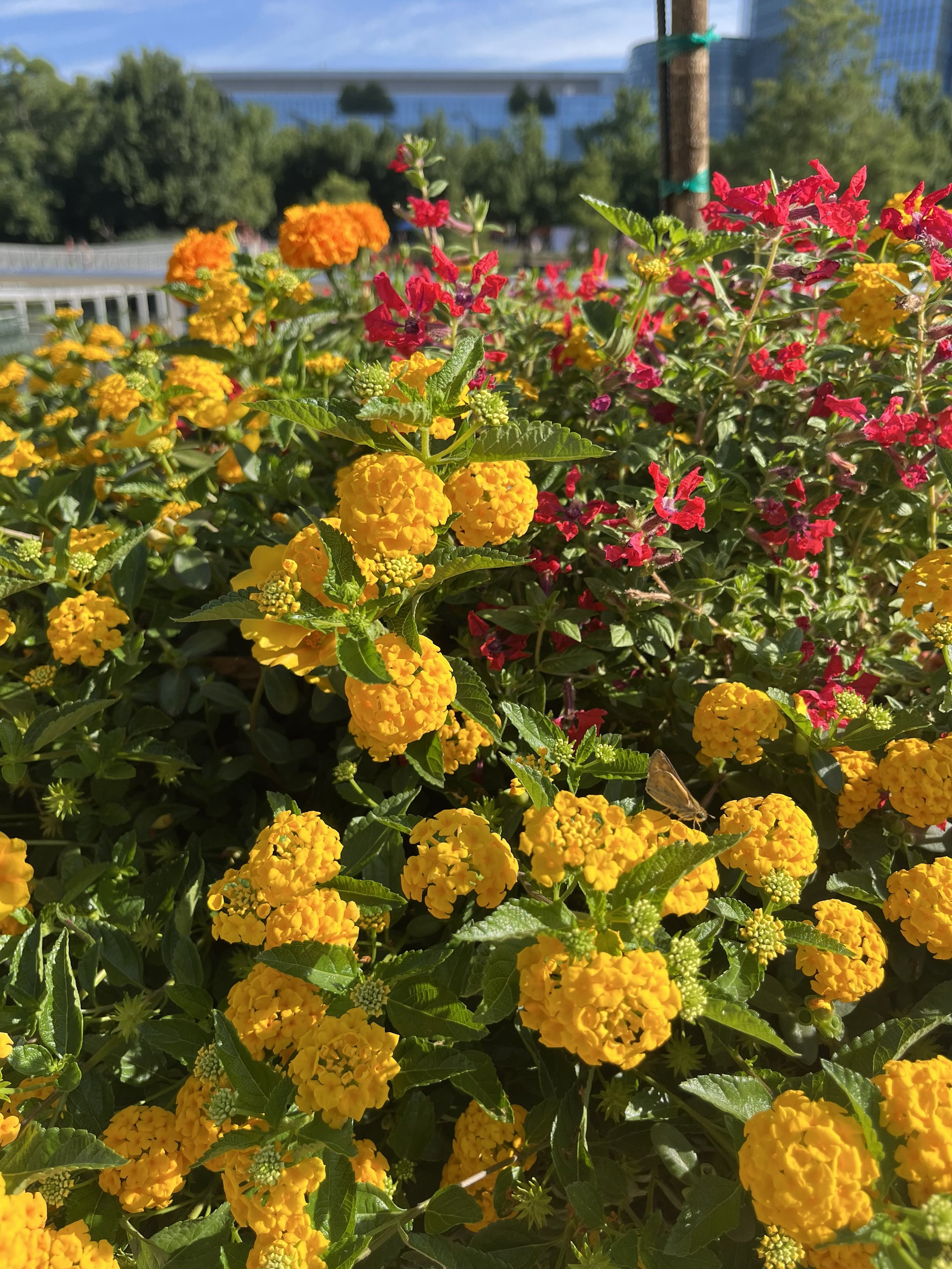
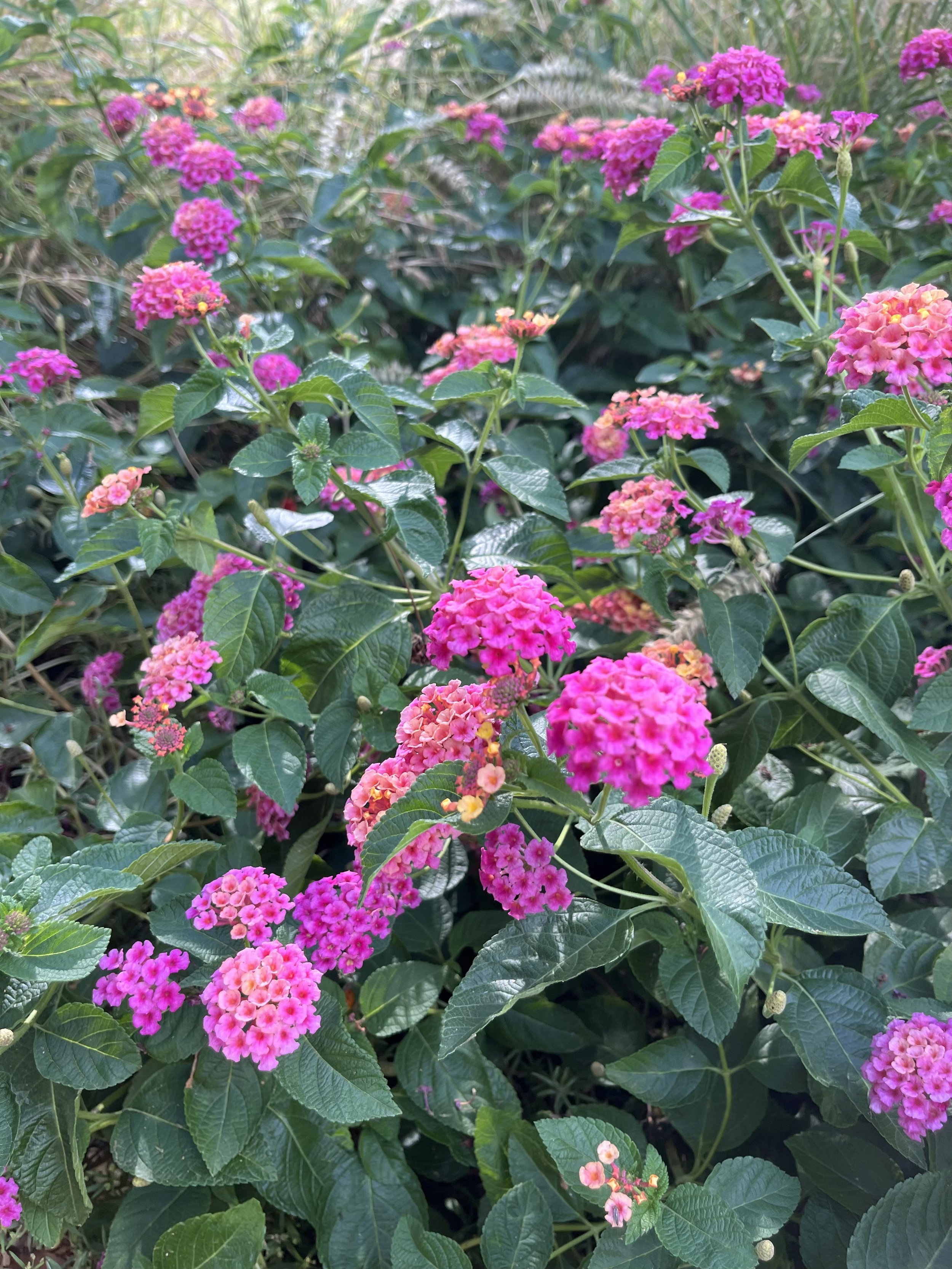
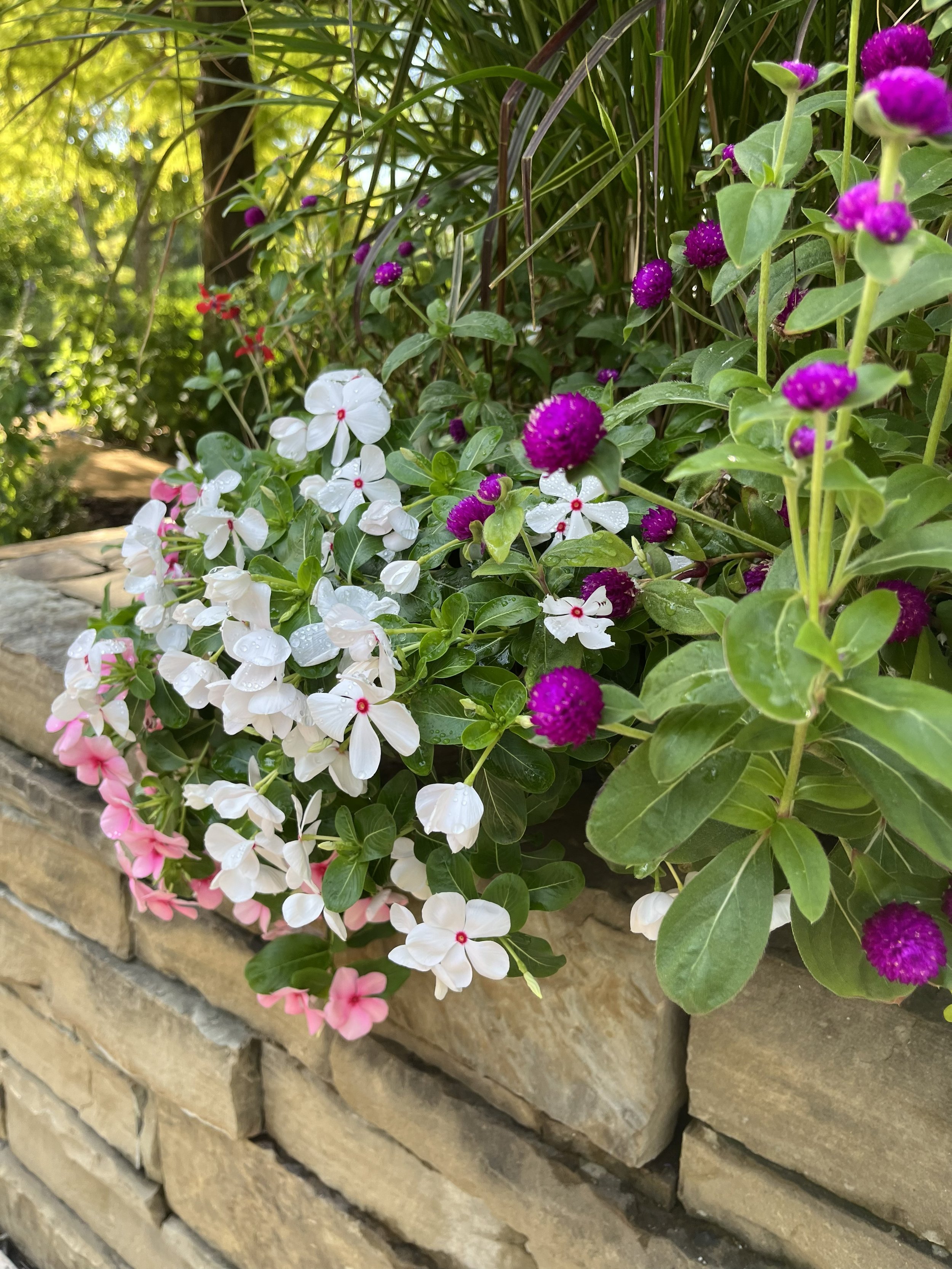
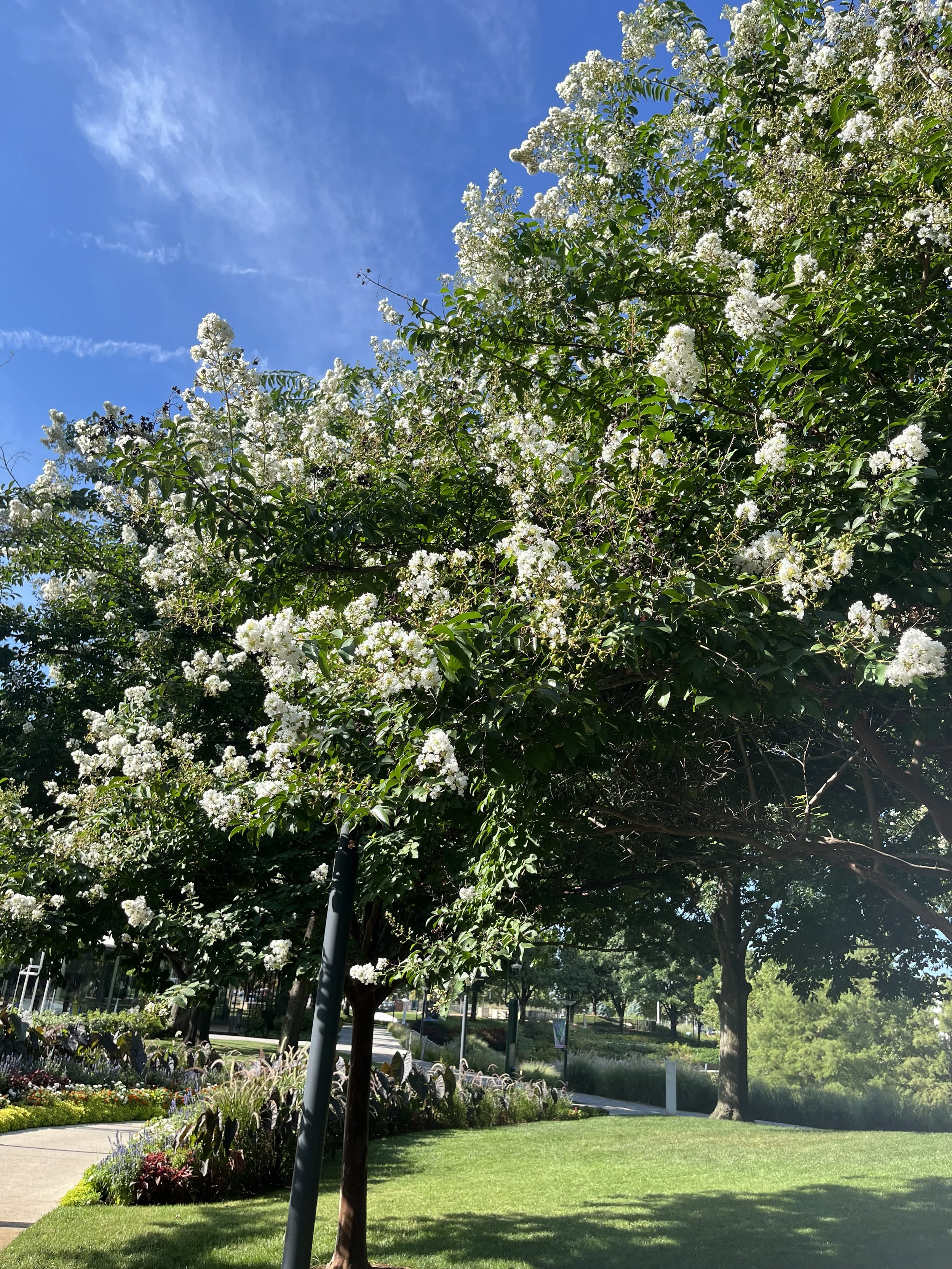
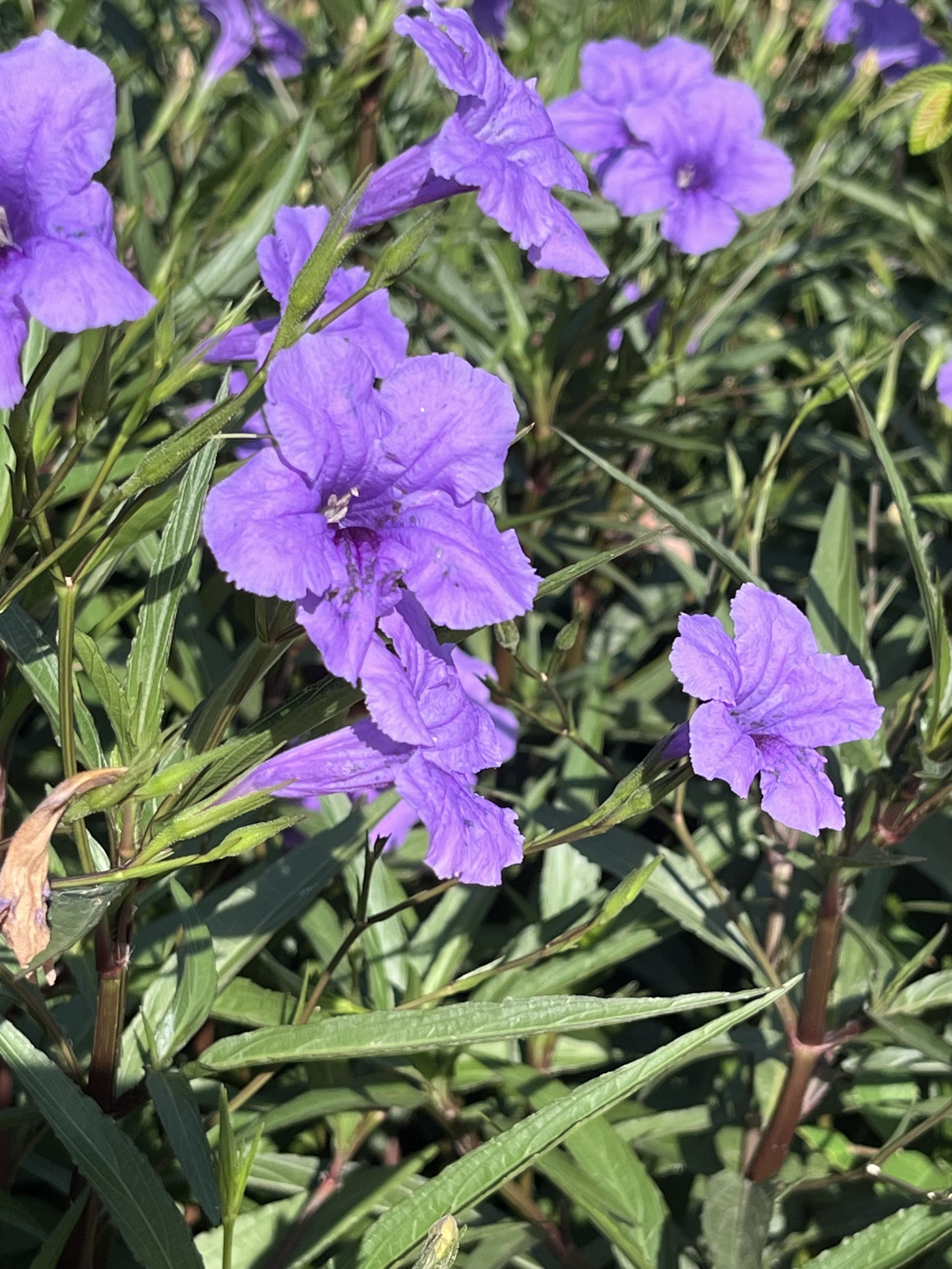
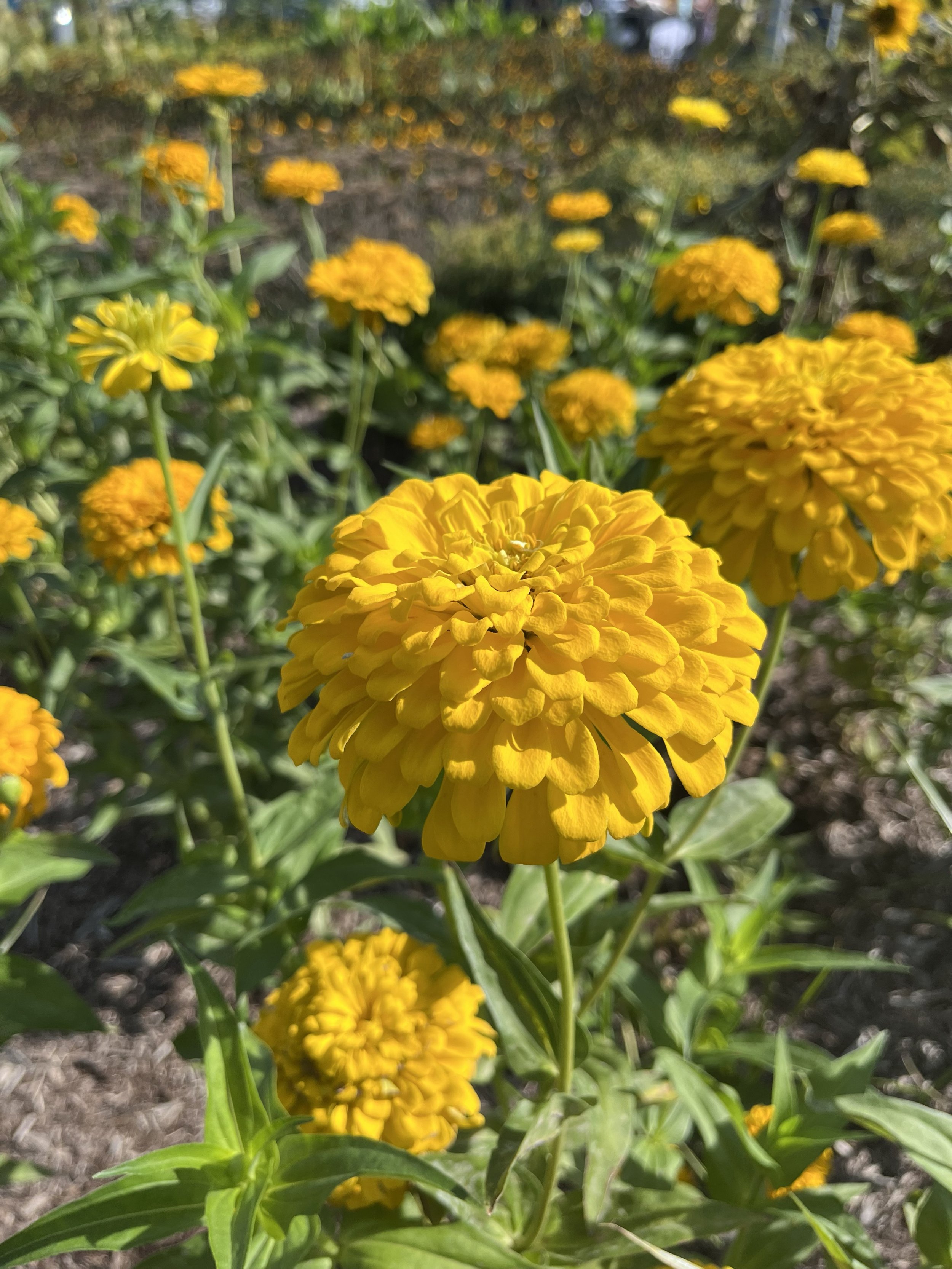
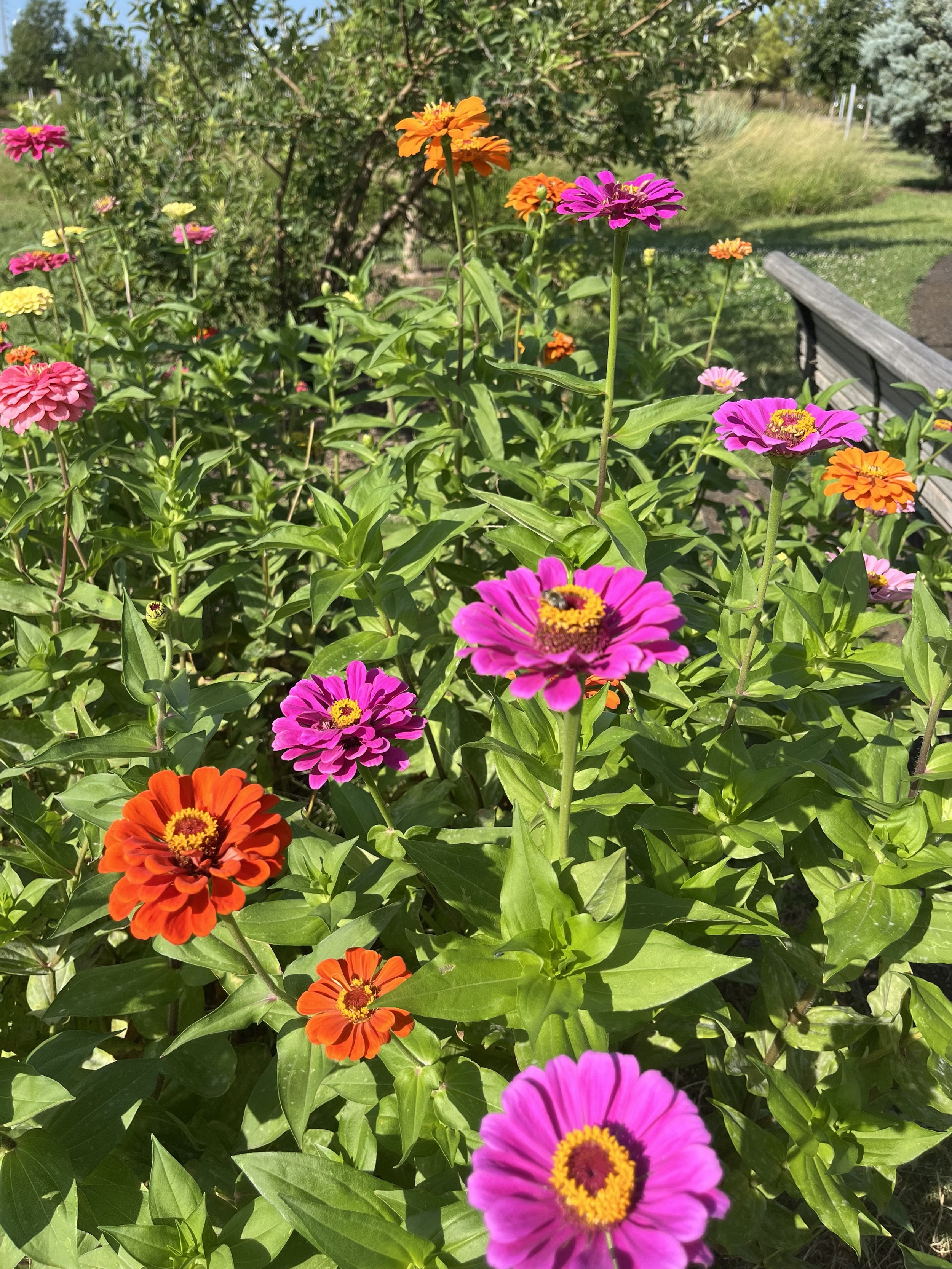
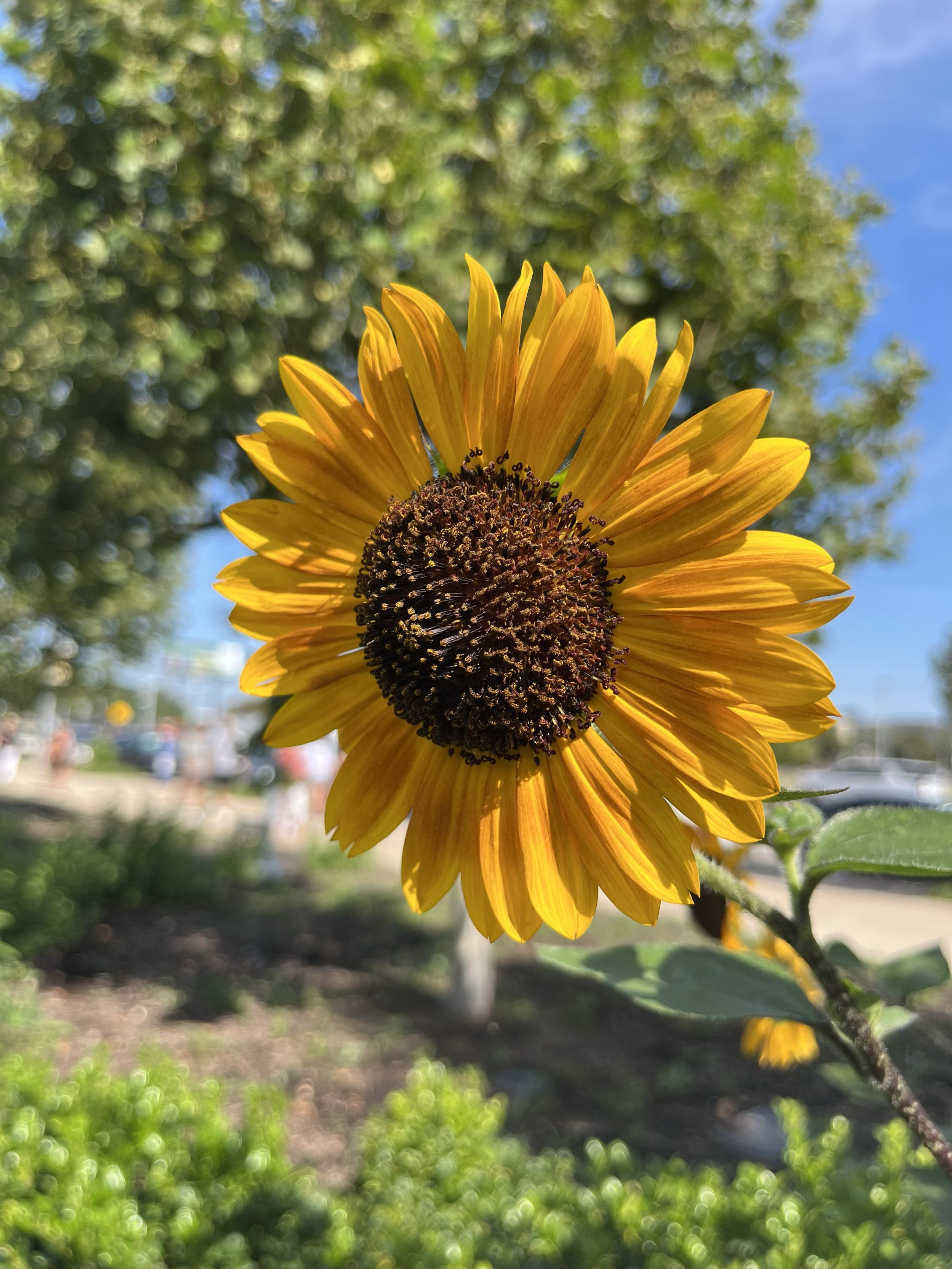
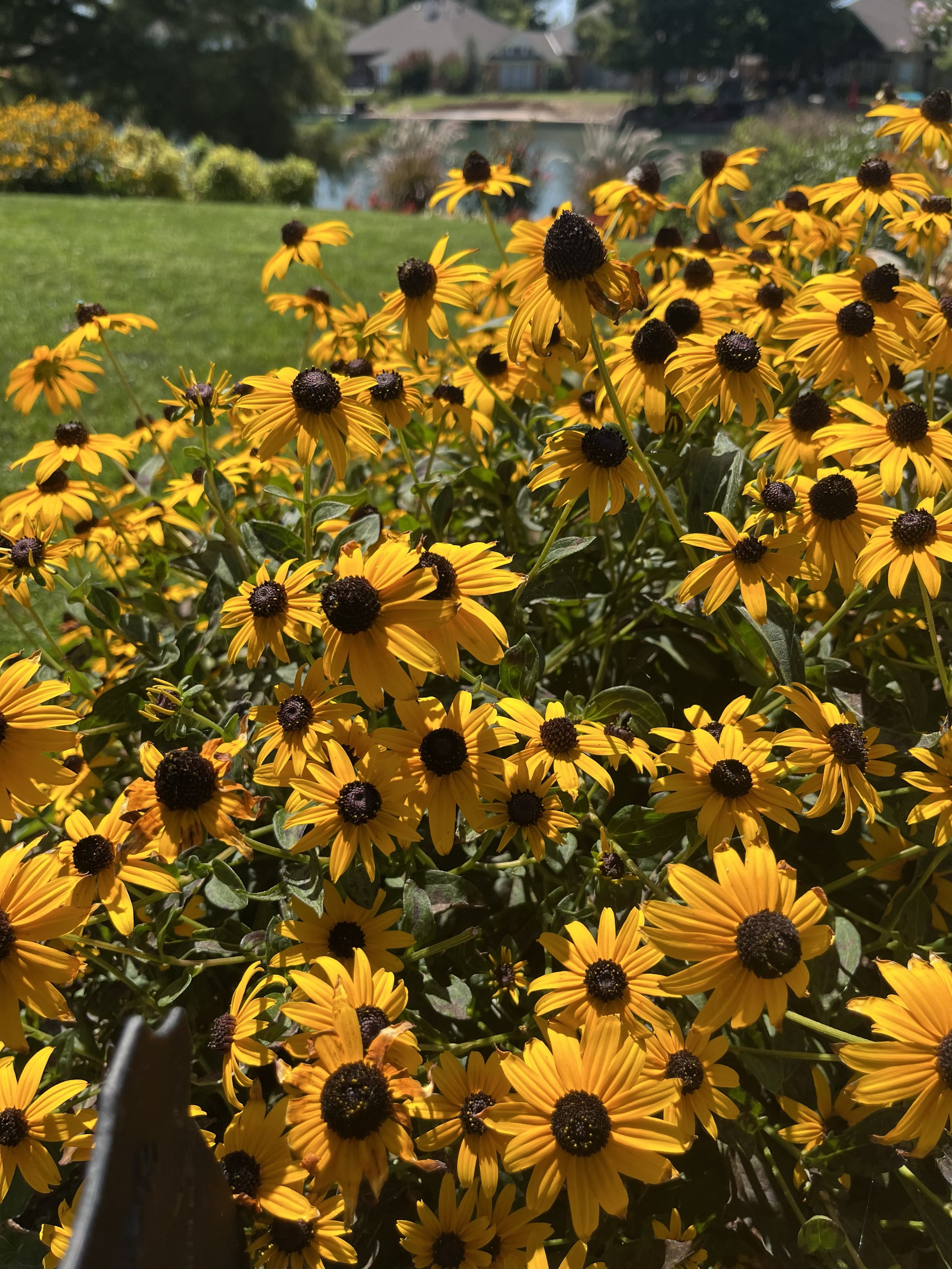
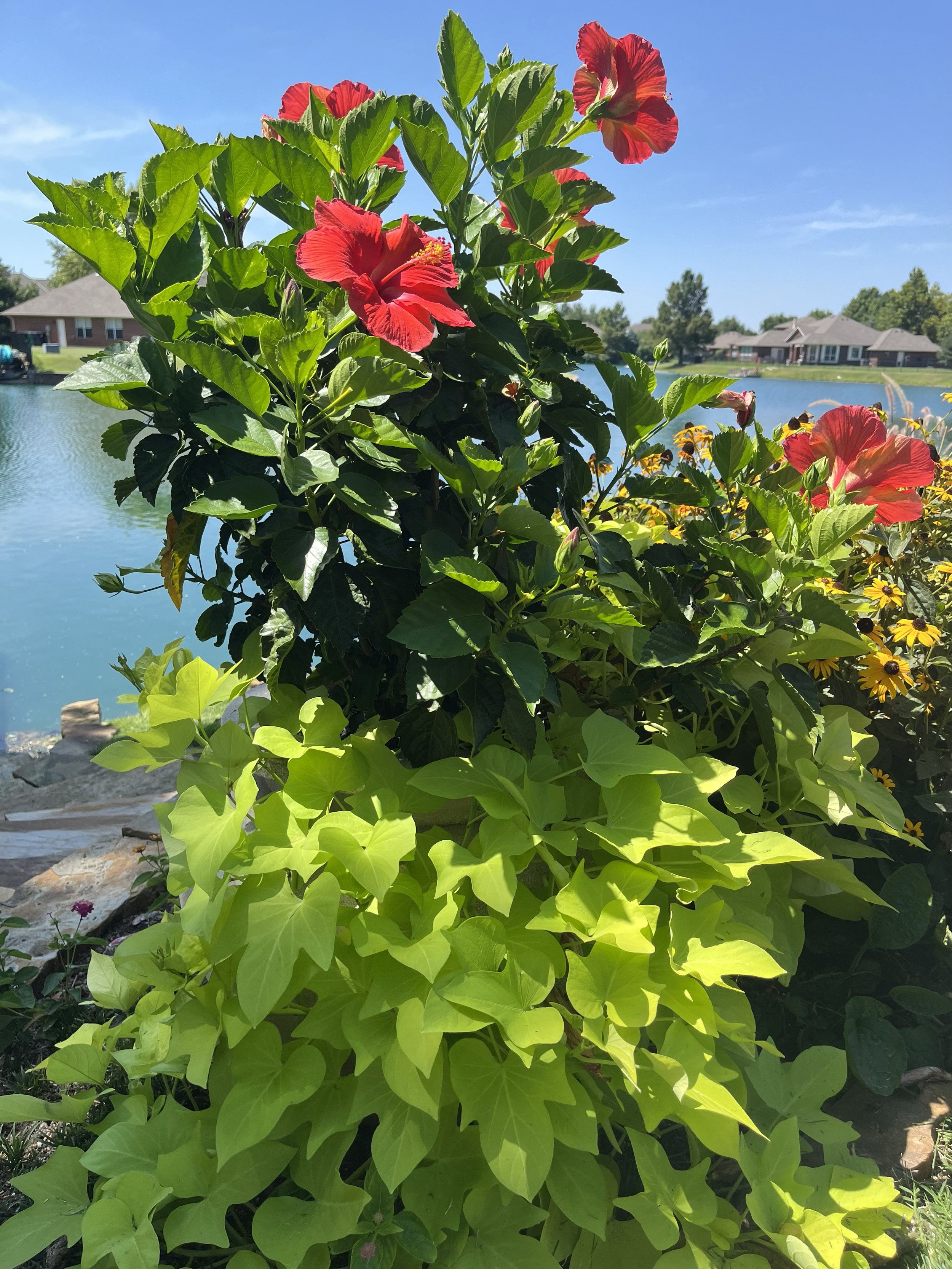
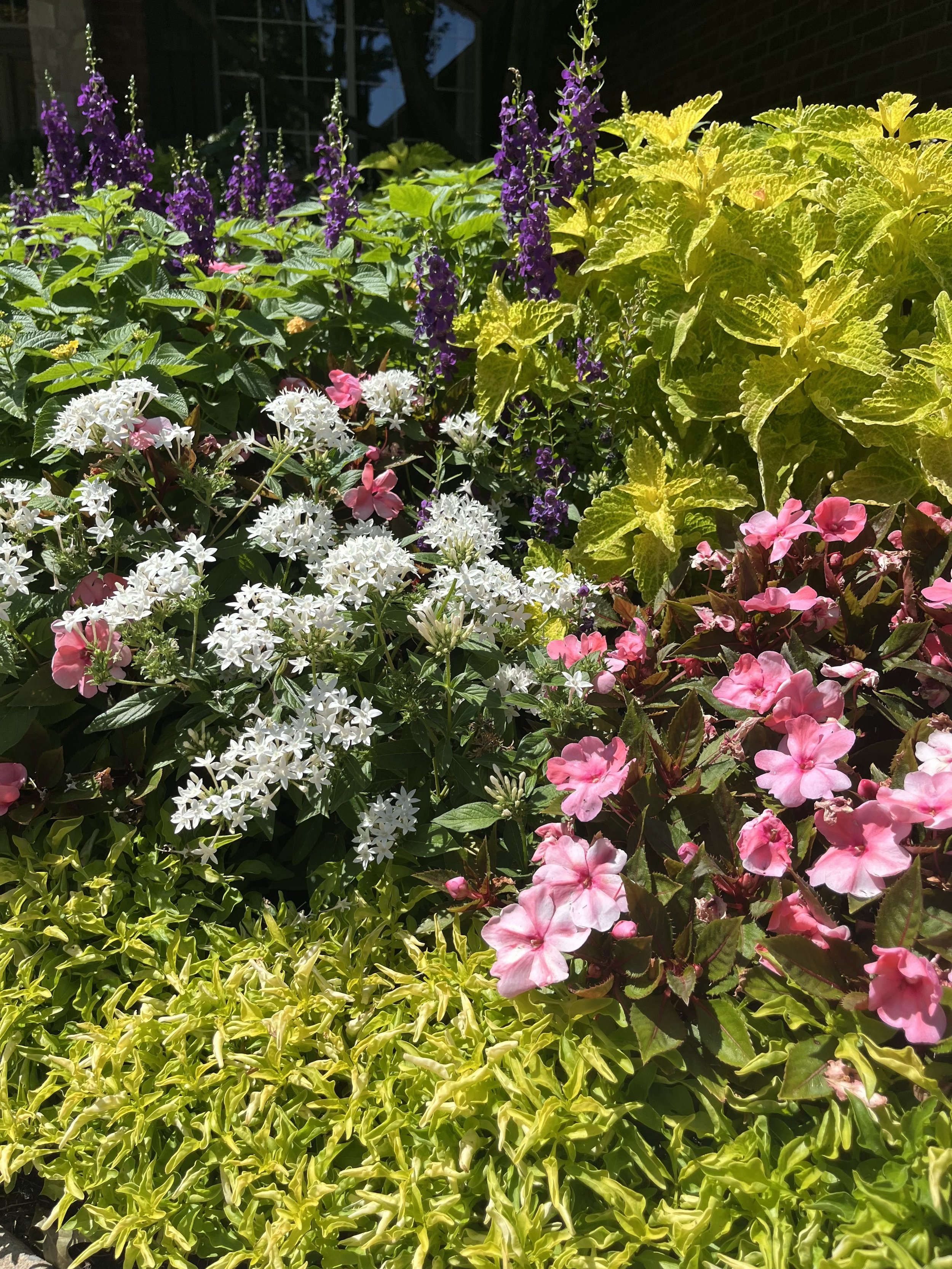
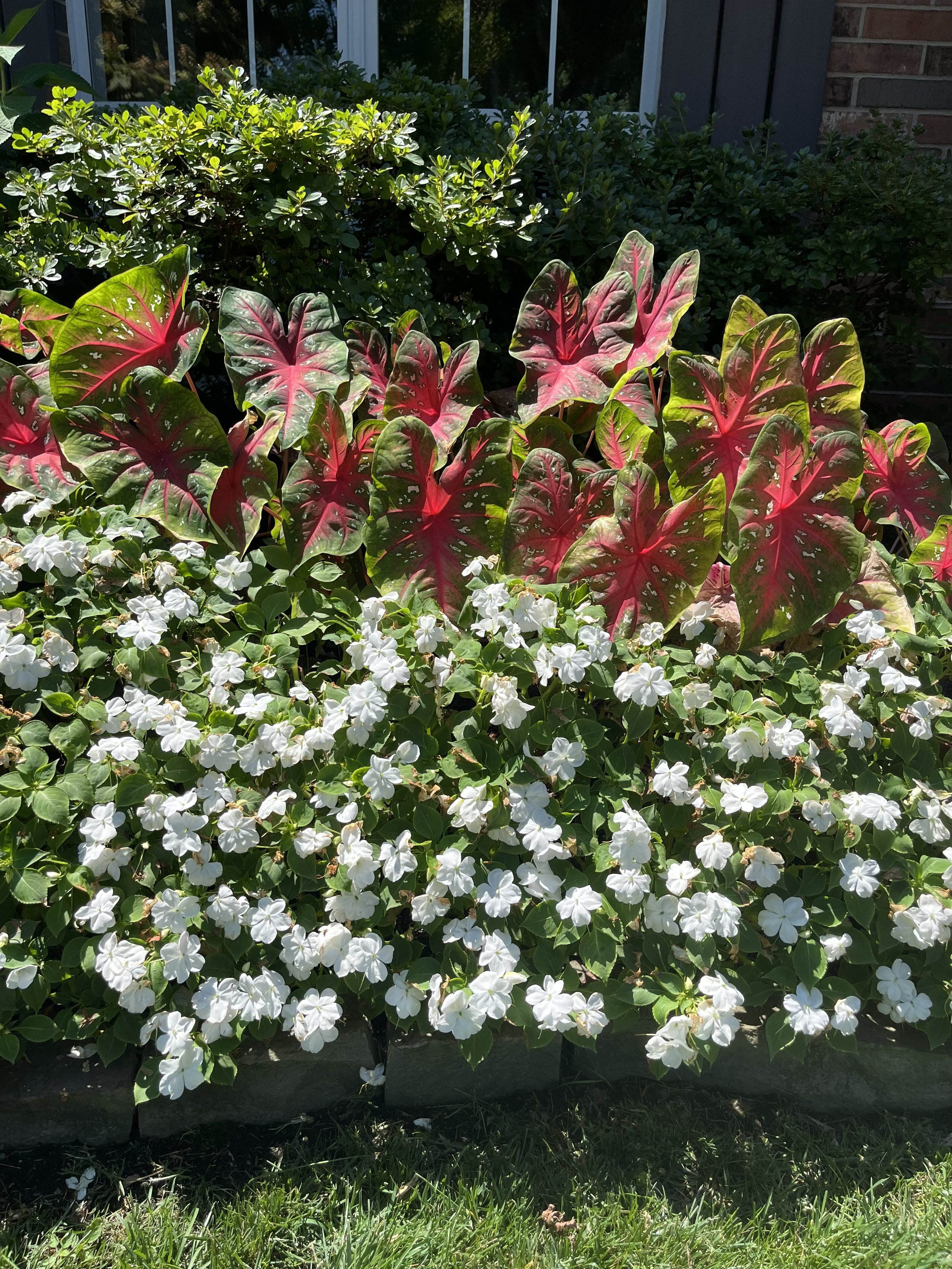
Having a great lawn and landscape through the heat of the summer is a result of good maintenance practices year after year.
A great lawn and landscape are not the result of one season, or even a full year of focus.
A great environment is the result of discovering and developing great practices and then repeating them season after season, year after year.
If you need assistance in developing great practices or have questions concerning your lawn and landscape, give us a call.
Lorne Hall
Hall | Stewart Lawn + Landscape
(405) 367-3873
What is your lawn doing for you?
Hard to believe, but we have arrived at the mid-point of the lawn care season. That’s right…if you typically mow your lawn 30 times per season, you have probably made 15 trips across your lawn so far in 2024.
So, why do you do it? What motivates you to have a great lawn?
Why does Hall | Stewart Lawn + Landscape have a passion for helping you have your best lawn?
Are all our efforts only in the pursuit of laying claim to the best lawn on the block?
Why do we work so hard to have a great lawn?
Is there anything more to a healthy, green lawn than curb appeal and feeling good about ourselves?
Have you ever pondered what a healthy lawn does for you?
Too often great lawns get a bad rap.
In the race to reduce carbon output and conserve water, have we forgotten the long list of benefits of a healthy lawn?
Concerns over water supplies, herbicides, pollutants, and your carbon footprint have caused some to race toward a more minimalist approach to landscapes and lawns.
Has the American lawn, green, neatly trimmed, symbol of civic virtue, outlived its purpose?
Is it good for the environment when living plants are replaced with artificial materials or hardscape?
Yes, water will be saved. Yes, there will be less fertilizer used.
But is there more to consider?
When it comes to the benefits of turfgrass most people don’t give it much thought. The environmental benefits of a healthy lawn are seldom considered.
Can you answer the question, “What is your lawn doing for you?”
Let’s explore a few things your lawn is doing for you:
Turfgrass captures carbon.
Healthy lawns absorb carbon dioxide and replace it with oxygen. A lawn is simply a grouping of thousands of oxygen making plants.
The average, managed lawn captures more carbon than a lawnmower produces.
The average lawn captures 300 lbs. of carbon per year and has a net positive impact on our environment.
A 2,500 sq. ft lawn, half the size of the average lawn, provides enough oxygen for a family of four.
What is a managed lawn? A lawn that receives regular mowing, some fertilizer and weed control applications. Maintaining a healthy turfgrass environment provides us with a critical component of a healthy world – less carbon.
An Ohio State Study found lawns that received only an occasional mowing and no fertilizer or weed control capture far less carbon.
Maintenance habits have a big influence on whether turfgrass helps or hurts the environment. Lawns cut too short typically create a negative carbon exchange. Weedy lawns, nutrient deficient lawns, and drought stress lawns result in thin lawns that have a negative impact on the environment.
EPA reports that turf grasses in the United States offset the carbon emissions of 5.2 million cars every year.
Actively growing and healthy lawns reduce heat.
A well-maintained lawn around homes can reduce air temperatures on the average 15 to 30 degrees compared to concrete, asphalt or gravel.
The California Energy Commission found the cooling effect of an average size lawn is equal to nearly 9 tons of air conditioning.
Grass cools the air by absorbing solar radiation and through evapotranspiration.
Studies estimate that improved planting and maintenance of lawns and landscapes around homes could reduce total US air conditioning requirements by 25%.
A healthy turf captures pollutants and reduces runoff.
Less runoff increases infiltration of water into the groundwater supply. A dense root system traps and removes pollutants moving through the soil and into the water supply. The natural filtration system of healthy turfgrass improves water quality.
Lawns are the best natural water purifier.
Turfgrass is more effective at stopping erosion than any other plant. Grass naturally slows runoff and allows more water to be absorbed.
Healthy lawns improve air quality.
Healthy lawns contribute to improved air quality by acting as traps for dust and particles. Because a lawn completely covers a soil surface, particles are prevented from being blown to another area.
Compared to hard surfaces, turf grass traps 10 to 30 times more air particles and pollution.
Lawns are a major component of higher home values.
Smart Money reported consumers value a home with a well-maintained lawn and landscape on average 11.3% over the base value.
Well maintained lawns are one of the most important factors individuals and families consider when deciding where to live.
Yes, there is a place for synthetic turf in the landscape as a part of an experiential environment.
Great lawns benefit the community and human health.
Green areas enhance community pride, provide places for people to come together and promote outdoor activity.
Lawns knit neighborhoods together. Lawns connect people.
Studies show people who live and work with a view of lawns and landscapes compared to hard surfaces are found to recover from stress quicker, experience fewer headaches, and are more productive.
Two studies show that children with Attention-Deficit/Hyperactivity Disorder have shown that green spaces, such as lawn areas, experience less severe symptoms.
Studies have also found the noise absorption capacity of turfgrass is significant.
Lawns are where memories are made. No doubt, everyone can easily think of fond memories on the lawn with family and friends.
The belief that well maintained lawns are an environmental liability is short-sighted.
Don’t fall for myth that a healthy lawn isn’t good for the environment.
Water concerns are legitimate. Education on proper watering is important. Deep, infrequent watering, based on the lawn’s needs, is a key to developing a healthy lawn that is good for the environment.
The scientific study “The Role of Turfgrasses in Environmental Protection and Their Benefits to Humans” stated, “the main cause for excessive landscape water use in most situations is the human factor.”
Excessive use of fertilizers and herbicides is a problem. But, when used properly, according to the label, fertilizers and herbicides are important ingredients in creating a healthy lawn that is beneficial to the world in which we live, work and play.
James Beard, Professor Emeritus of Texas A&M, said, “The environmental benefits of turfgrass are the most sensible and economically feasible approach to counter the greenhouse effect.”
So, what has your lawn done for you lately?
Far more than you can imagine!
Lorne Hall
Hall | Stewart Lawn + Landscape
(405)367-3873
What’s bugging your landscape?
Wouldn’t it be nice if your landscape could tell you when something is bugging them?
If they could, there would be a whole lot of chatter out in the landscapes right now.
No two years are the same when it comes to battling insects and disease in the lawn and landscape. But one thing is consistent, when your landscape is under stress it is more susceptible to insect and disease problems.
The dryness of the last 30 days along with the above normal temperatures have brought added stress to your turf and plants resulting in more insect and disease pressure.
Here are a few of the problems that we are either currently seeing in landscapes or we have on our watch list:
The first generation of webworm started to show up in trees this week. Inspect your trees this weekend. The best control is to cut the branch out when they are small.
The webworm caterpillar weaves a loose web around tree branches to protect themselves while they are destroying your tree’s leaves.
WEBWORM
Timing – The first-generation spin webs in July and later generations create webs in September to October.
Caterpillars weave a loose web around tree branches while they are munching on the leaves.
Favorite trees include hickory, mulberry, oak, pecan, popular, redbud, sweetgum, and willow. But, you can find them on most ornamental shade trees when populations are heavy.
Early generations won’t cause long lasting damage. They are just unsightly. The last generation can cause damage when the branch tries to rebud just before a killing frost. When this occurs, you can expect the affected branch to die.
The best control is to cut out any affected branches in the early generations when the webbing is small. Completely dispose of the branch as the worms will exit the webbing and return to a tree. If the web is too high or if the population has increased to the point that pruning is not possible, an insecticide application will be needed. The spray must penetrate the webbing to gain control of the caterpillars. Dormant oil applications are a good idea as worms overwinter in tree bark.
Even though early populations do not cause damage, early control is important. When left untreated typically later generations’ populations increase.
Webworm caterpillars loosely weave webbing around branches to protect them while stripping a branch of leaves. When spraying, you mush have enough pressure to penetrate the webbing to gain control.
Bagworms produce silk threads to move locations.
BAGWORMS
Timing - Eggs hatch in May and they remain active through September.
½-2” long spindle shaped bag wrapped in the foliage of the host plant. Young bagworms are very hard to spot.
Favorite host plants are juniper, arborvitae, spruce, pine and cedar. But, they can attach themselves to deciduous shrubs and trees and we are seeing a lot of bagworms on deciduous trees this year!
Females lay eggs in bags left on plants over the winter. One female bagworm will lay as many as 500 eggs. The eggs hatch in the late spring and tiny larva crawls out and start feeding. As they feed, they use silk and plant materials to protect and camouflage themselves. Bagworms can strip a plant of foliage.
Heavy infestations, particularly on the same plant year after year, can completely defoliate a plant. Defoliation of needle evergreens, such as junipers and cedars, usually results in plant death. Broadleaf evergreens and deciduous plants typically are not killed but a weakened and more susceptible to other insect and disease problems.
When there are only a few, control is best by hand picking. If you have a large population an insecticide treatment should be made as soon as they are noticed. Try to remove any bags left on plant material in the fall. Bags left on the plant will serve as cocoons for females to lay more eggs. When removing bags, destroy them. Do not pick and toss on the ground as the worm will crawl back to a plant.
Bagworms use the leaves of the host plant to protect themselves while they feed. This bagworm came off an elm tree, not a typical host plant for the caterpillar.
Bagworms can strip a mature Bald Cypress of its leaves quicker than you would expect.
Although not as common bagworms will feed on deciduous trees. If you notice skeletonized leaves, look close, most likely there are bagworms attacking the tree.
Young bagworms are small and can be hard to see. They wrap themselves in the plant needles making them hard to notice.
If you notice a juniper or cedar starting to loose color, inspect for bagworms.
Left untreated, large, heavy infestations of bagworms will kill mature trees and shrubs.
If there are not too many, the best way to control bagworms is to simply pull them off and throw them away. Don’t throw them on the ground, if you do they will crawl back onto the tree.
Aphids are small and often go unnoticed but the sticky substance they leave behind is easy to spot.
APHIDS
Timing – Species start producing in April and increase rapidly as temperatures increase.
A small, soft-bodied insect that is nearly invisible to the naked eye. The honeydew, sticky substance they excrete is the easiest way to know aphids are active. Colonies develop on the underside of the leaf and often are not noticed until the sticky substance starts to show.
They feed on the leaves, stems and buds of a wide variety of plants throughout the growing season. Usually, they attack the succulent new growth.
Aphids generally do not cause serious harm to mature plants, although they can be harmful to young plants. Heavy populations can cause wilt and yellowing of leaves as the sap is removed. Blooming trees and shrubs will see a reduction in flowers. Aphids can promote sooty mold, a fungal disease, and spread viruses.
Early detection is the key. Aphids mature in 7-10 days and can produce 40-60 offspring resulting in population explosions in the thousands within a few weeks.
When populations are small, a high-pressure blast of water can be used to wash the insects off the leaves. Wiping the leaves with a soapy solution is also effective with early detection. In most cases, once you notice the honeydew, it is best to treat with an insecticide. A dormant oil application in the winter is helpful in reducing populations the following season. Lady bugs can be used as a beneficial insect control when populations are small.
Aphids feed on the underside of the leaf and become noticeable as the leaf becomes covered with the sticky substance they excrete.
SPIDER MITES
Timing – They are active from early summer through fall. The hotter and dryer the weather, the more severe the problem will become.
Very small (1/60 of an inch) that live on the underside of leaves and survive by sucking on the cell content of the leaves. First shows up as stippling of light dots on the leaves. Leaves then turn from bronze, to yellow, and then fall off.
They get their name from the small silk protective webs they create.
Because spider mite damage can look like many other plant problems, the best way to determine if it is spider mite is to shake the plant leaves over a white sheet of paper. Spider mites will look like tiny moving black dots on the paper.
Spider mites reproduce rapidly when conditions are perfect. Spider mites can hatch in as little as 3 days and become mature within 5 days. One female can lay up to 20 eggs per day during their 2-4 week life span.
The best control results from making two applications 7-10 days apart.
Adequate plant moisture during the hottest time of the year helps prevent population explosions.
Early signs of spider mites.
To know if you have spider mites shake leaves over a white sheet of paper.
Spider mites will look like tiny moving black dots.
Silk protective webbing formed by the spider mite.
White scale attacks Crape Myrtles leaving a black sooty substance on the bark.
Crape Myrtle Scale
Timing – Females lay eggs from May through September. Crawlers emerge within a day or two and spread to new areas of the plant.
The scale is white to gray and exudes a pink blood-like liquid when crushed. Initially, you will notice a black sooty mold on the twigs and trunks of crape myrtles.
Bark scale is difficult to control without the use of a systemic insecticide to kill the sucking pests.
Inspect new plants for scale before purchasing.
Scrubbing the bark with a soft brush and mild solution of dishwashing soap and water will remove many of the females and eggs as well as remove the black sooty mold.
A dormant oil application in the late winter to early spring is an effective way to reduce scale populations.
SOFT OAK SCALE
Timing – One generation per year. Crawlers emerge in June, feeding and spreading on the branches.
They are convex in shape resembling a helmet, brown and ¼” in size. Crawlers are small and pale in color.
Scale feed on the fluids in the vascular system.
They produce honeydew which is a source for mold and attract ants and other insects.
They rarely kill the tree but open up wood wounds that provide entry for other damaging pathogens.
When populations are allowed to increase, canopy damage may occur along with discoloration of the leaves.
Application of an insecticide via spraying needs to occur in June when the crawlers are active. Annual spray applications in June are required until the populations are under control.
An alternative treatment is trunk injections of a systemic insecticide. Trunk injections allow the insecticide to be readily distributed throughout the plant’s vascular system to the fluids the scales feed on.
Soft Scale are small brown convex shaped insects on oak tree branches.
ARMY WORMS
Timing – Moths migrate from the Gulf Coast in June, lay eggs and the first-generation caterpillars start feeding in July. With a 28-day life cycle there can be 4 or 5 generations between July and November.
Army worms are always present in our summer lawns and landscapes. When populations are normal you may never know they are there. But, when conditions are right, as they were in 2021, we can see an explosion and experience turf damage.
Early caterpillars are green and very small. As they grow to 1 to 1 ½” they turn browner with reddish brown stripes on each side of the body and small back spots on the top. Their distinctive mark is an inverted “Y” on the front of the head.
Army worms will feed on any leafy, soft plant with plenty of moisture in the leaf. In 2021 they feasted primarily on fescue lawns because growing conditions were perfect for fescue. In previous outbreaks, army worms picked bermuda over fescue. If army worms are high in populations this summer, you can expect them to choose bermuda over fescue because the early summer heat has kept fescue from flourishing.
Watch for areas of the lawn that appear to have drought stress should not be. Test the area with a soap flush. Mix 1 teaspoon of dish soap with 1 gallon of water and pour over the surface. If you have army worms, they will come to the surface.
Treatment with a systemic insecticide when the worms are small before they become heavy feeders is best.
Can you count the number of army worms in this picture from August ‘21?
If you have areas in your lawn that are turning brown you can test for army worms by drenching the area with soapy water. If there are army worms present they will immediately come to the surface.
Army worms are present every year but in numbers that don’t usually cause turf damage. August ‘21 army worm populations were high enough they devastated areas of lawns in just a couple of days.
Healthy landscapes are a result of an Integrated Pest Management program.
The first step of an IPM approach is maintaining healthy plant material with proper watering, feeding and pruning. Insect activity increases on plant material that is already stressed.
The second step is simply monitoring your plants. Weekly observation is critically important. Does the overall plant color look healthy? How do the leaves look?
Our landscapes represent large investments in both time and money. They add curb appeal and provide enormous benefits to the environment. It is important that we do all we can to keep them healthy and growing.
The best way you can protect your investment is to take a few minutes each week to inspect your lawn, shrubs, trees and flowers.
Complete control is much easier when insects are noticed early while populations are small.
Please let us know if you have any questions or concerns about your lawn and landscape.
Lorne Hall
Hall | Stewart Lawn + Landscape
(405)367-3873
What can your lawn do for you?
In the race to reduce carbon output and conserve water, many have forgotten the long list of benefits of a healthy lawn. Concerns over water supplies, herbicides, pollutants, and your carbon footprint have caused some to race toward a more minimalist approach to landscapes and lawns.
Over the past few years the media joined the war against the landscape with articles such as “The Life and Death of the American Lawn. Grasses – green, neatly trimmed, symbols of civic virtue – shaped the national landscape. They have now outlived their purpose.”
One of the hottest trends is the replacement of natural grass with landscape gravel or artificial turf. Both have their place, but not at the expense of a healthy landscape of plants, trees, and turf.
Is it good for the environment when living plants are replaced with artificial materials? Yes, water will be saved. Yes, there will be less fertilizer used. But, is there more to consider?
Can replacing a living plants with artificial materials really be a net positive for the environment?
When it comes to the benefits of turf grass most people don’t give it much thought. The environmental benefits of a healthy lawn are seldom considered. Most would have a hard time answering the question, “What is your lawn doing for you?”
Let’s explore a few reasons why a healthy landscape is important to our environment:
Turfgrass captures carbon.
Healthy lawns absorb carbon dioxide and replace it with oxygen.
The average, managed lawn, captures more carbon than a lawnmower produces. The average lawn captures 300 lbs. of carbon per year and has a net positive impact on our environment.
A 2,500 sq. ft lawn, half the size of the average lawn, provides enough oxygen for a family of four.
What is a managed lawn? A lawn that receives regular mowing, and some fertilizer and weed control applications. Maintaining a healthy turfgrass environment provides us with a critical component of a healthy world – less carbon. An Ohio State study found lawns that received only an occasional mowing and no fertilizer or weed control captured far less carbon.
Maintenance habits have a big influence on whether turfgrass helps or hurts the environment. Lawns cut too short typically create a negative carbon exchange. Weedy lawns, nutrient deficient lawns, and drought stress lawns result in thin lawns that have a negative impact on the environment.
Actively growing and healthy landscapes can provide benefits of heat reduction.
Trees, shrubs, and lawn areas around homes can reduce air temperatures on the average 15 degrees compared to concrete, asphalt or gravel.
Studies estimate that improved planting and maintenance of lawns and landscapes could reduce total US air conditioning requires by 25%. Grass cools the air by absorbing solar radiation and through evapotranspiration.
A healthy turf slows water runoff reducing erosion and therefore reducing sediment build up and improves the quality of streams, ponds, and lakes.
Less runoff increases infiltration of water into the groundwater supply. A dense root system traps and removes pollutants moving through the soil and into the water supply. The natural filtration system of healthy turfgrass improves water quality.
Turfgrass is more effective at stopping erosion than any other plant. Grass naturally slows runoff and allows more water to be absorbed. Also, grass is a natural water purifier.
Lawns are a major component of higher home values.
Smart Money reported consumers value a home with a well maintained lawn and landscape on the average 11.3% over the base value.
Healthy lawns improve air quality by trapping dust and allergens.
Dense turf reduces the blowing of soil particles. Also, it only takes 25 sq. ft. of turfgrass to provide enough oxygen for one adult for one day.
Great lawns benefit the community and human health.
Green areas enhance community pride, provide places for people to come together and promotes outdoor activity. Research shows the result is improved physical and mental health and reduced stress.
The belief that well maintained lawns are an environmental liability are short-sighted. Water concerns are legitimate. Overwatering lawns and excessive use of fertilizers and herbicides drive much of the concern. Education on proper watering, maintenance, fertilizer, and herbicide use is important.
A scientific study “The Role of Turfgrasses in Environmental Protection and Their Benefits to Humans” concluded that there is no valid scientific basis for water restrictions of turfgrass. The report stated, “the main cause for excessive landscape water use in most situations is the human factor.”
James Beard, Professor Emeritus of Texas A&M, said, “The environmental benefits of turfgrass are the most sensible and economically feasible approach to counter the greenhouse effect.”
So, what has your lawn done for you lately? “More than you can imagine!”
Lorne Hall
Hall | Stewart Lawn & Landscape












